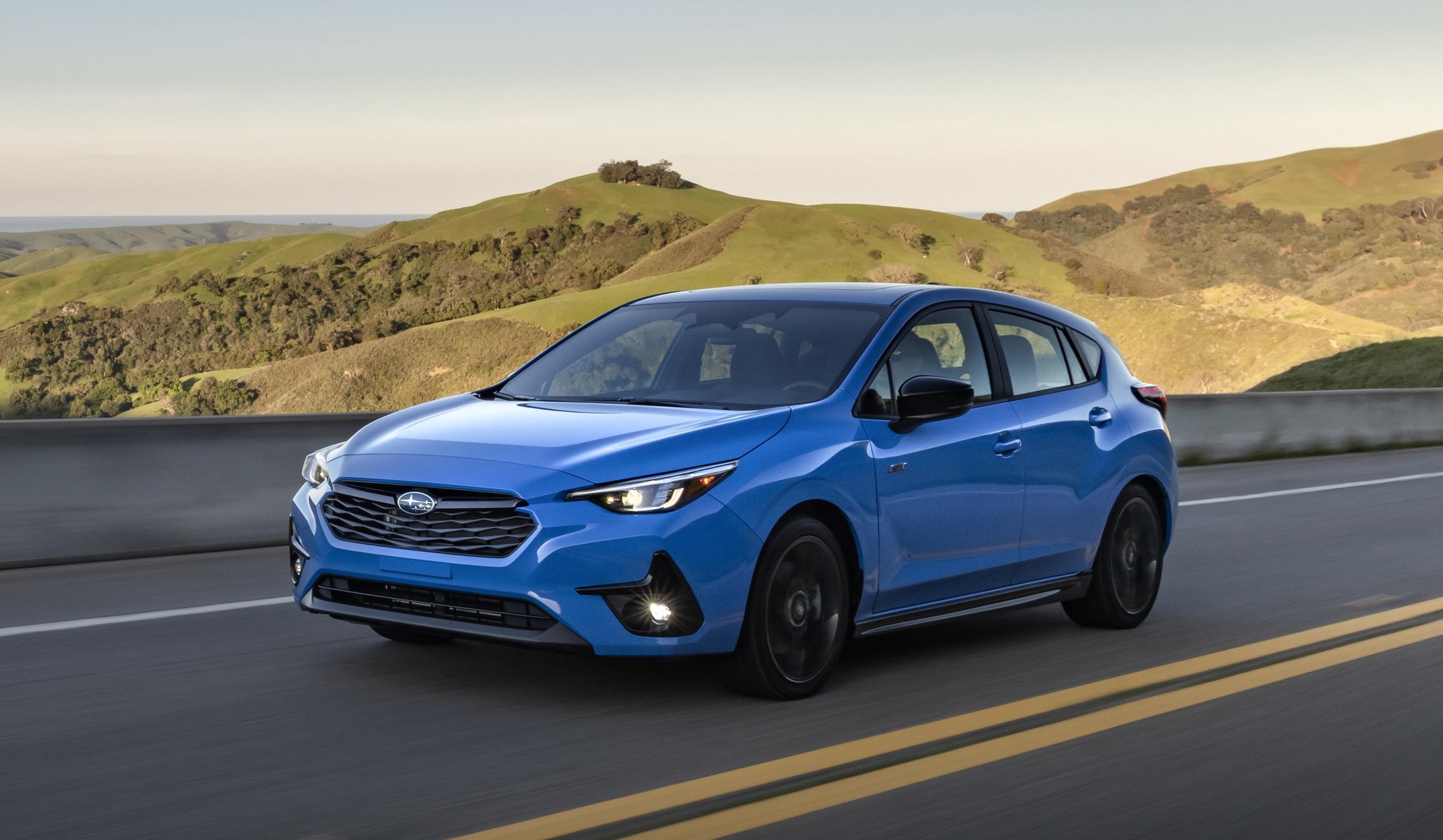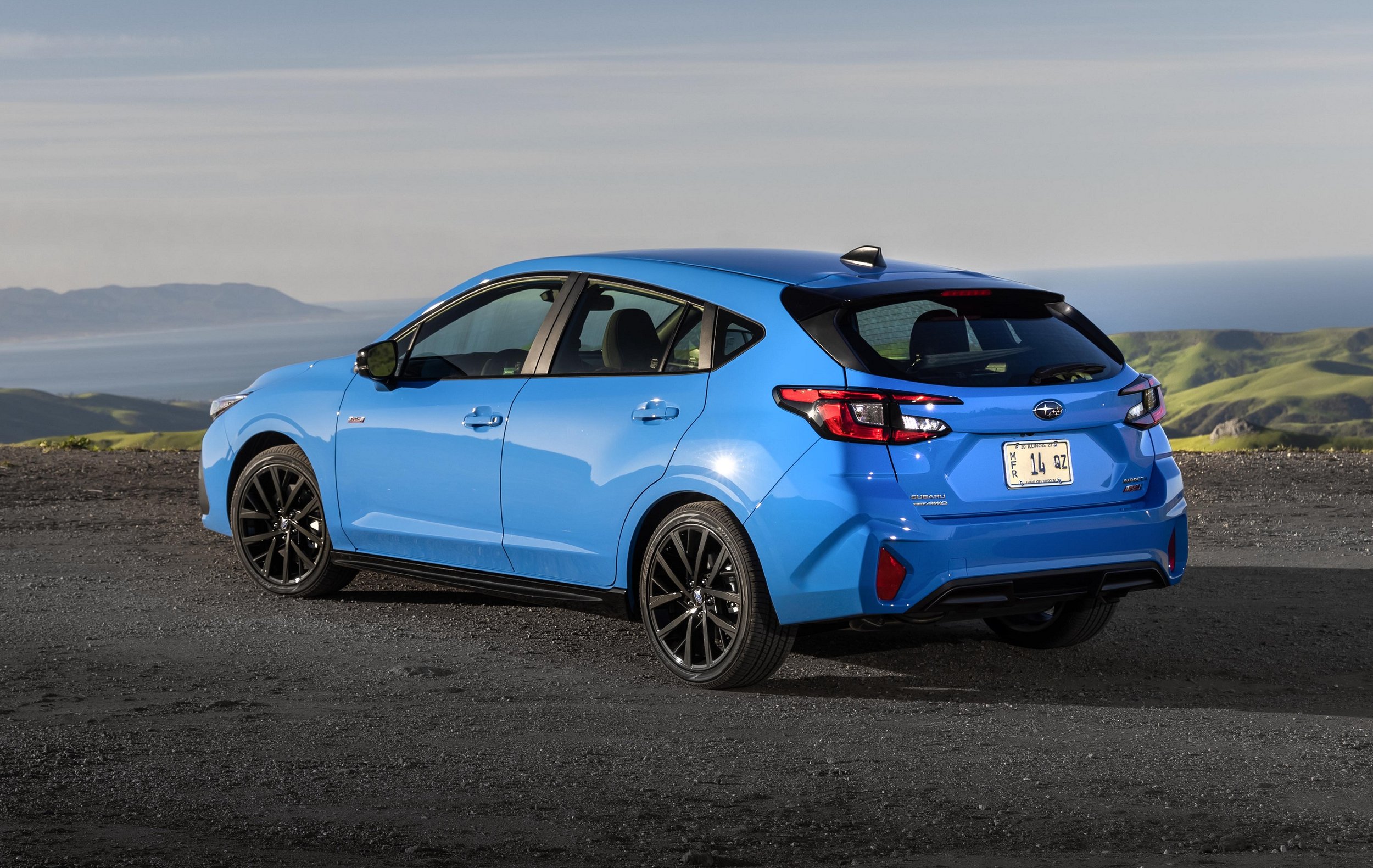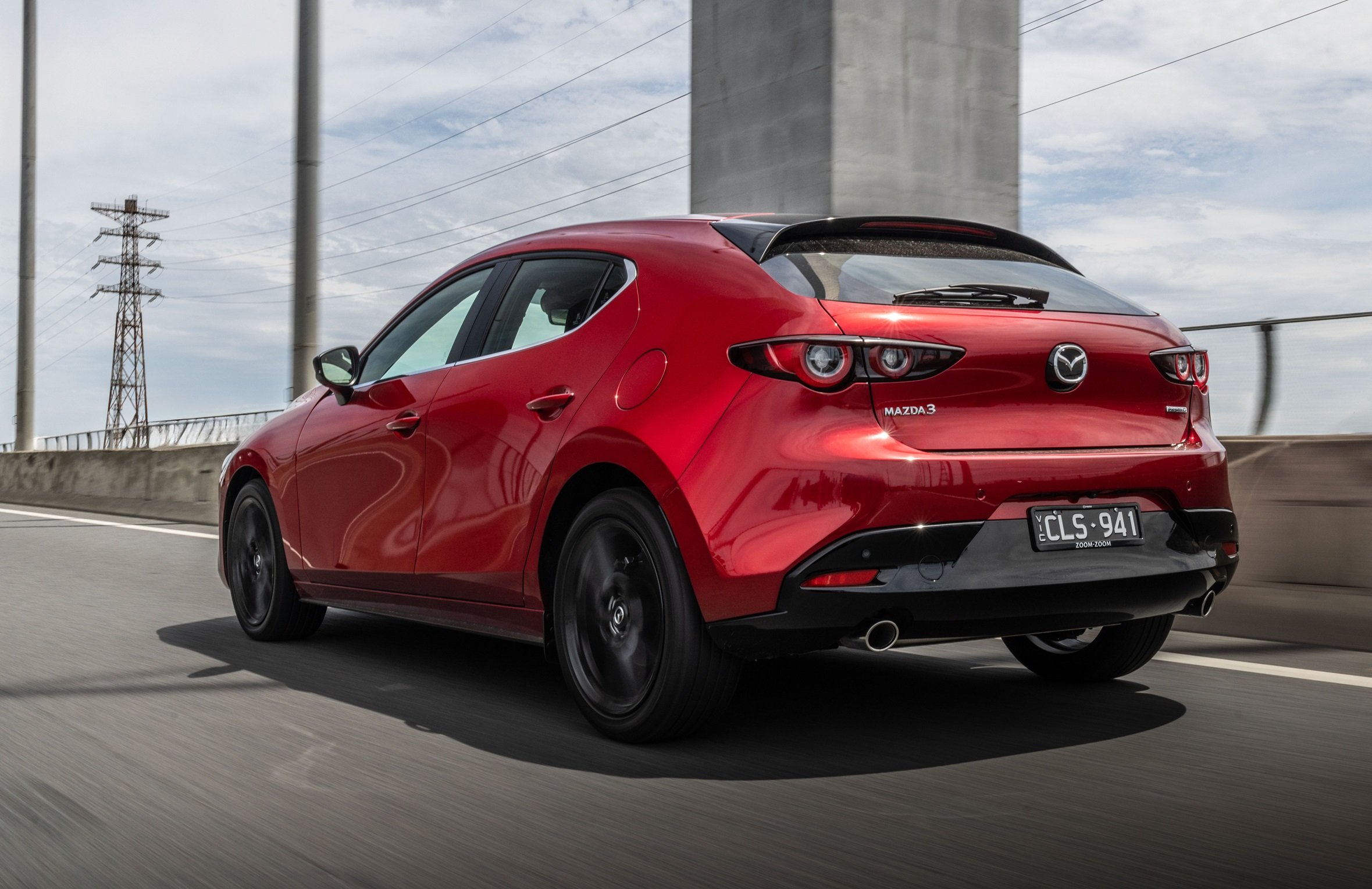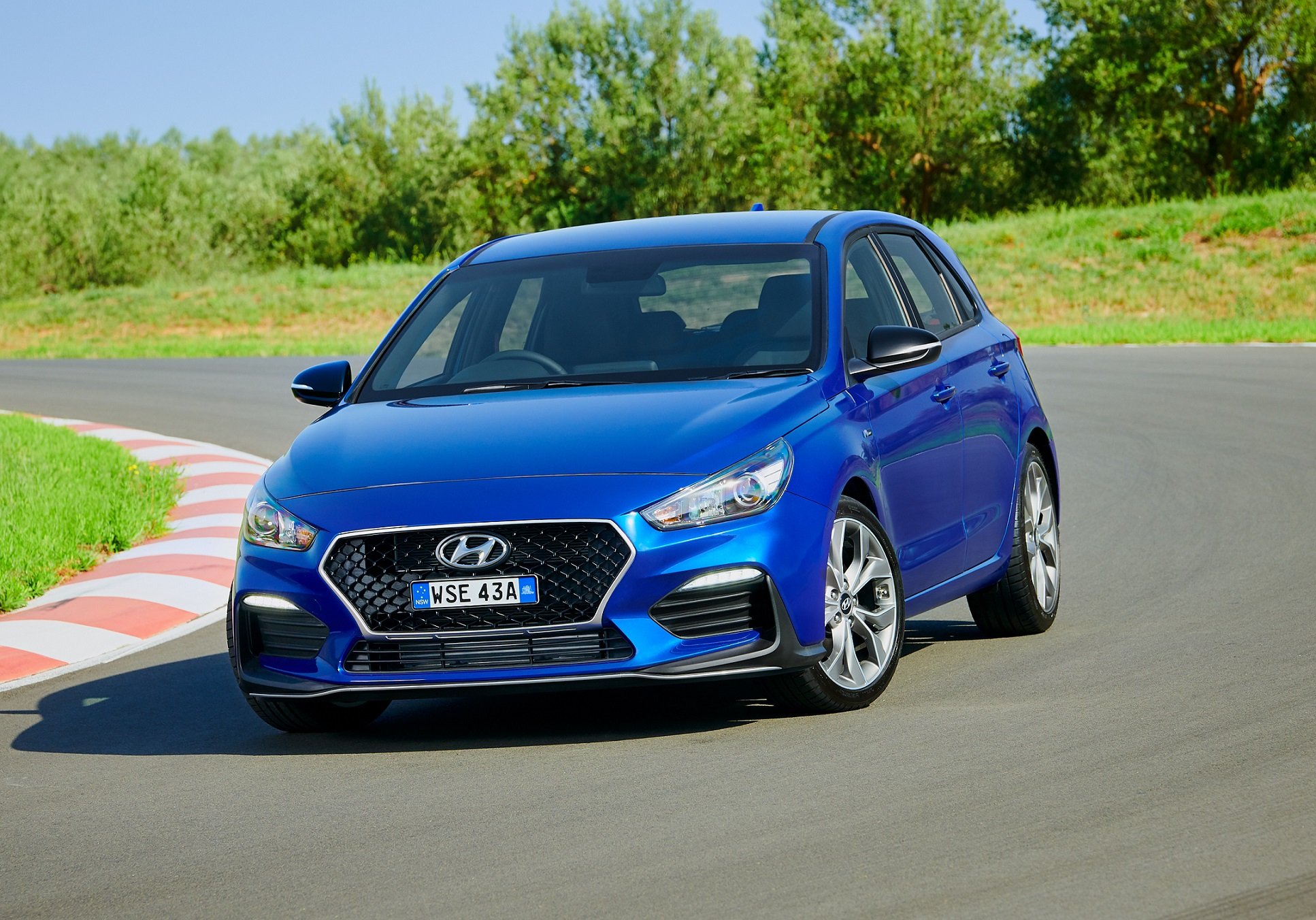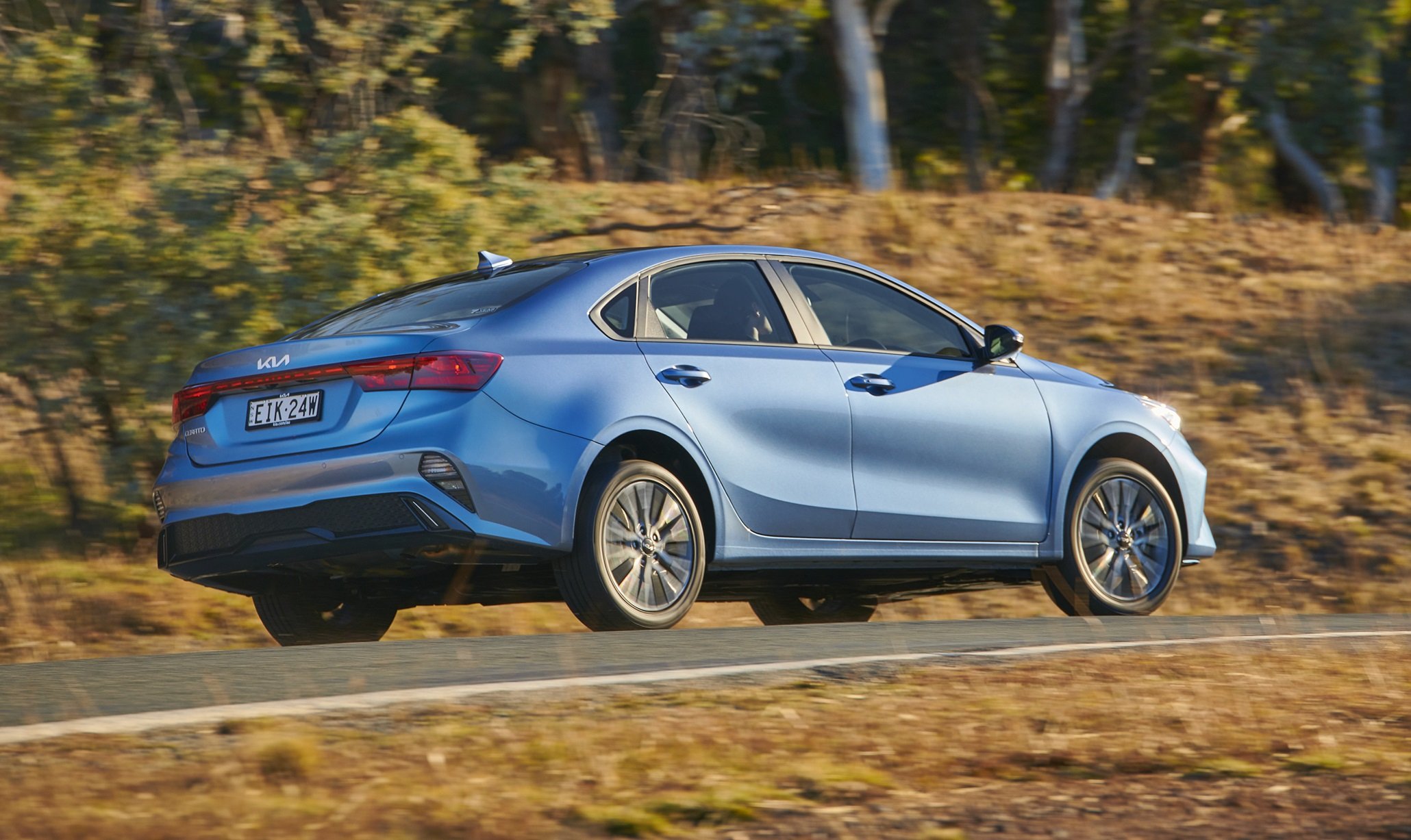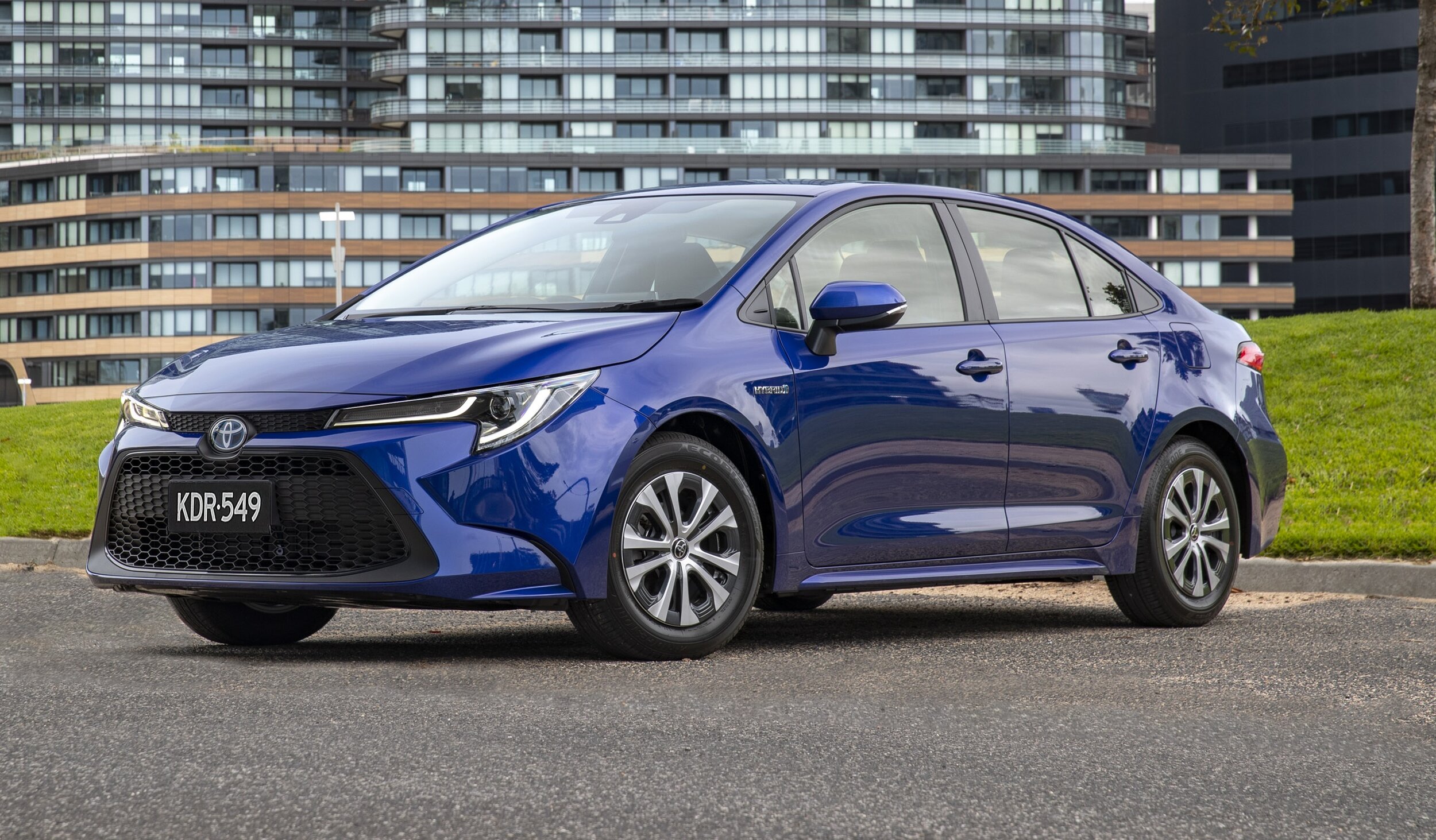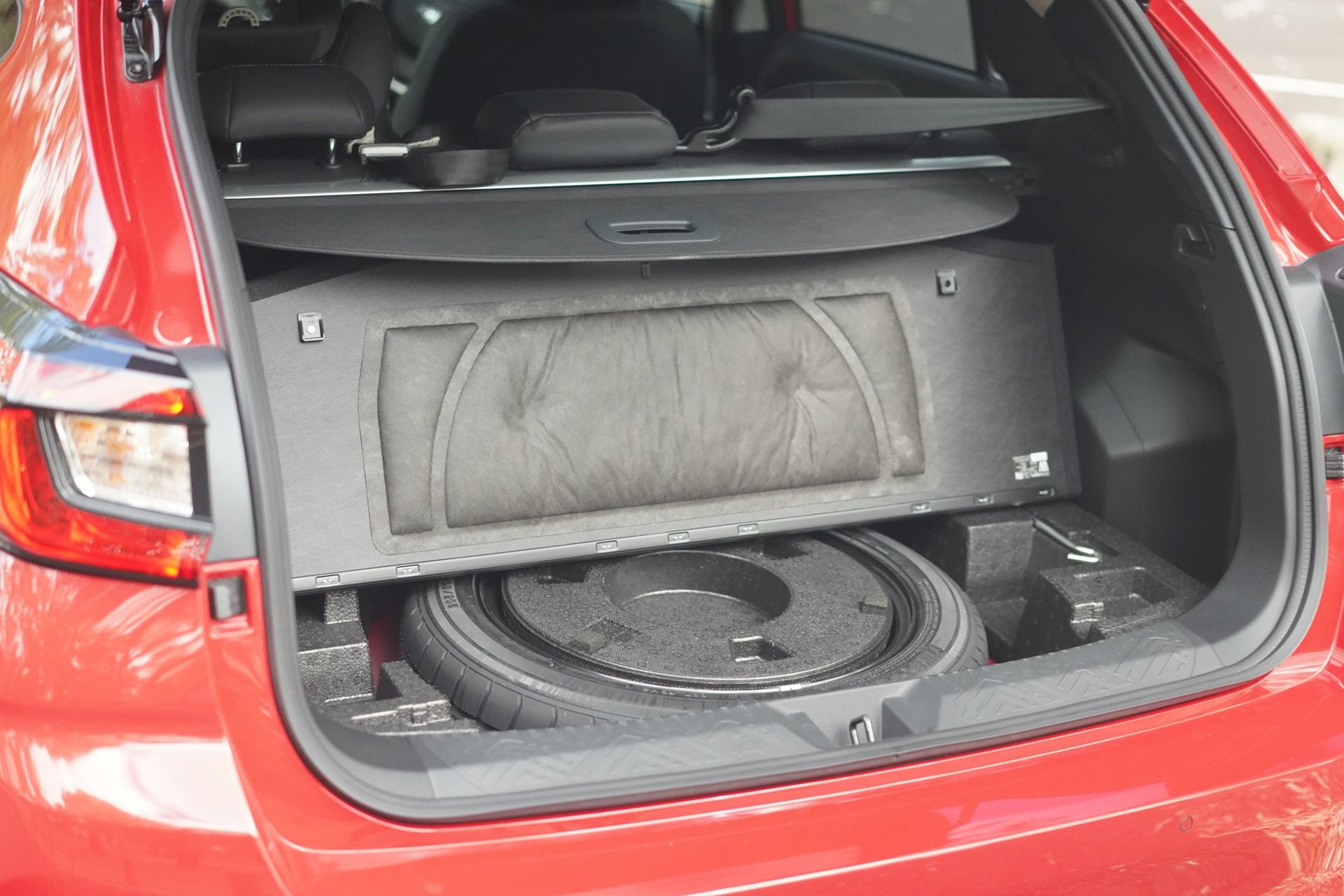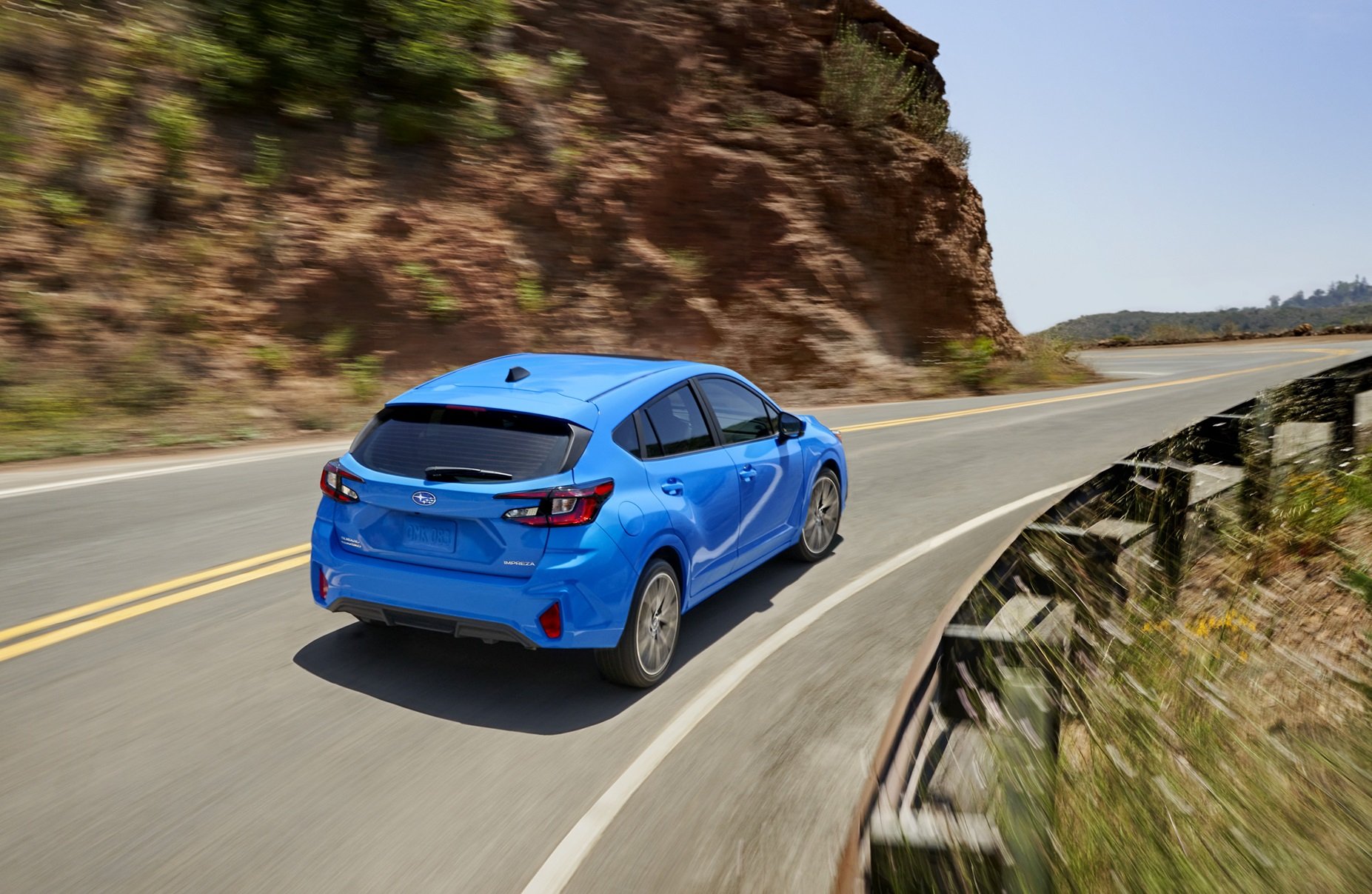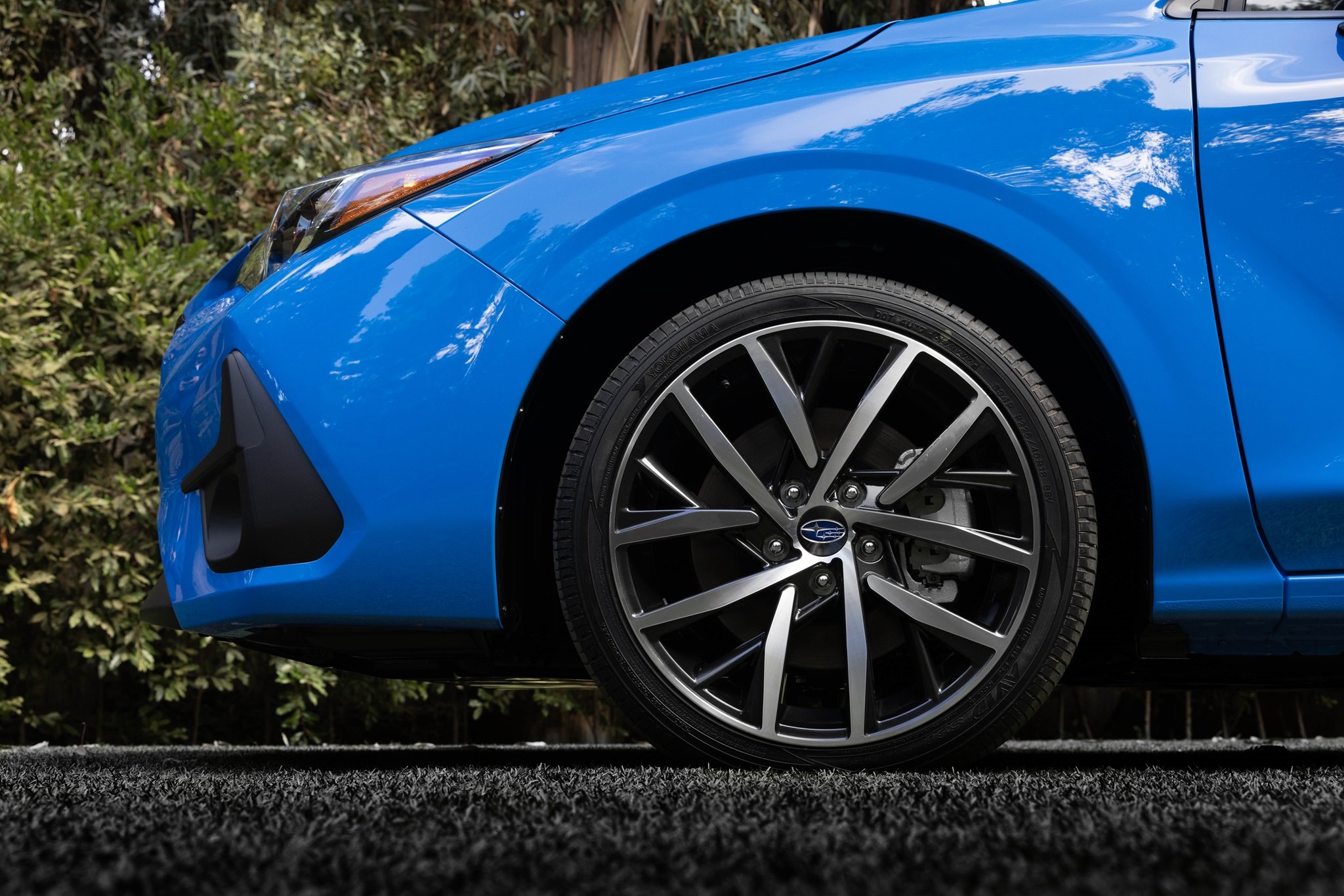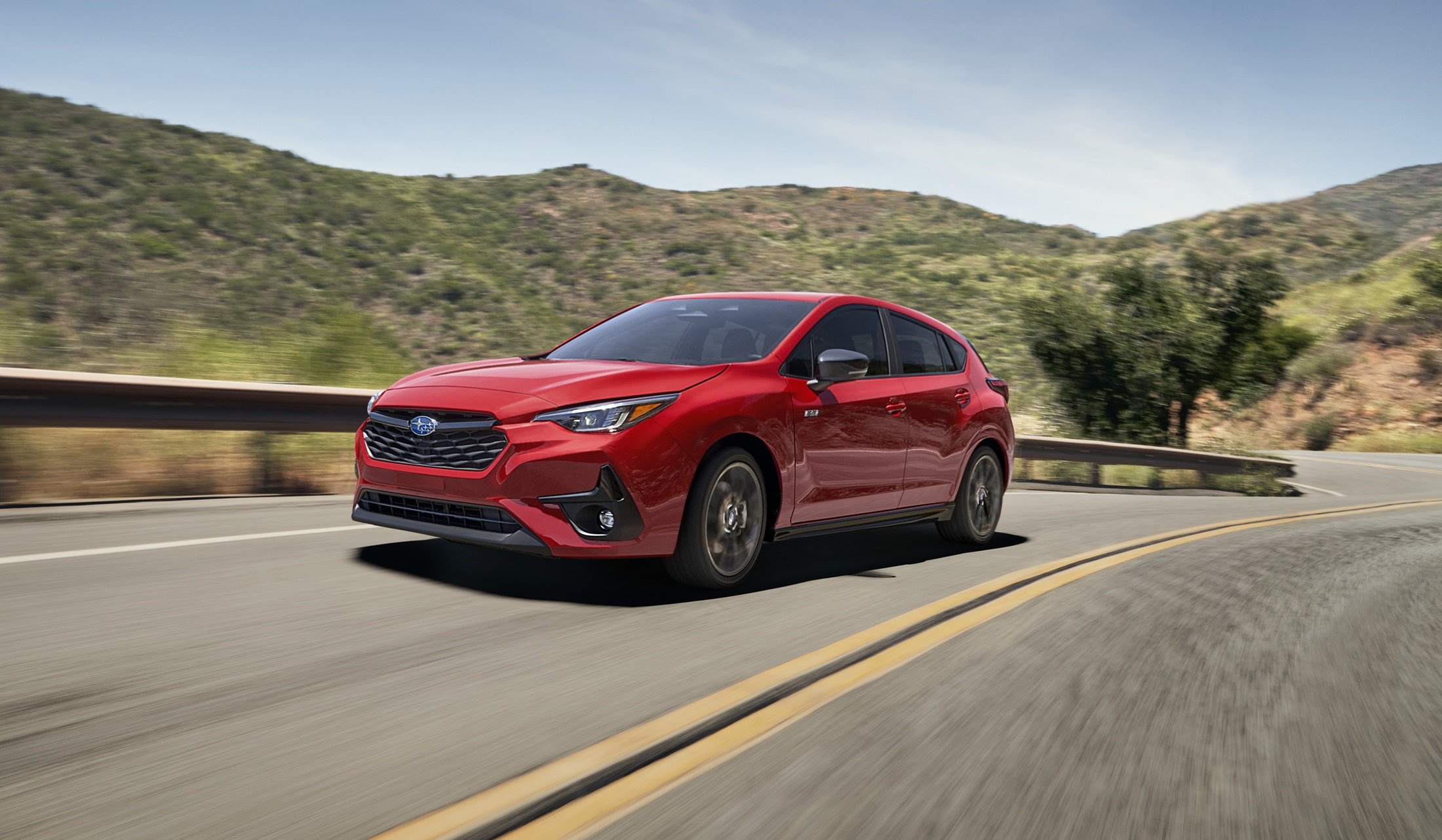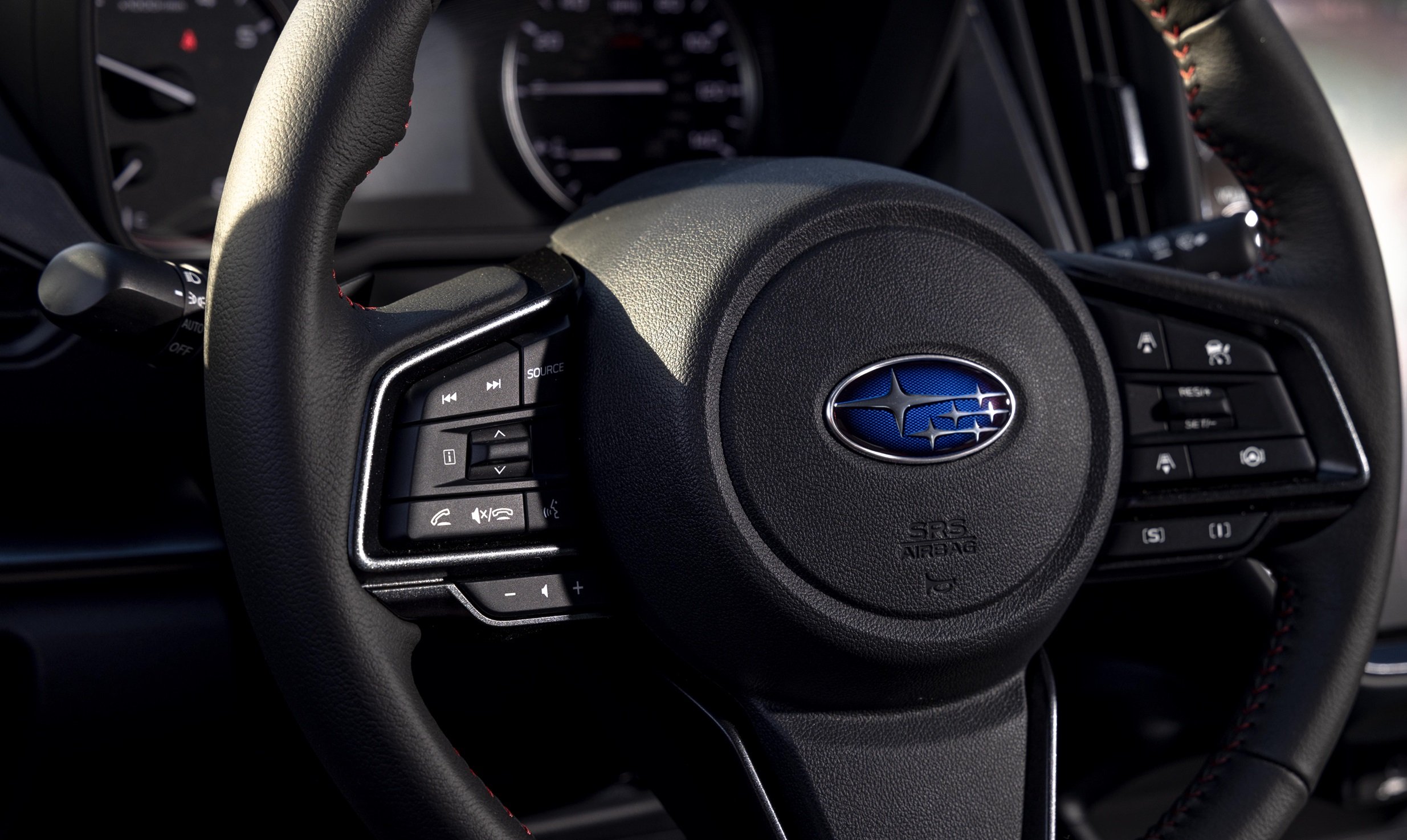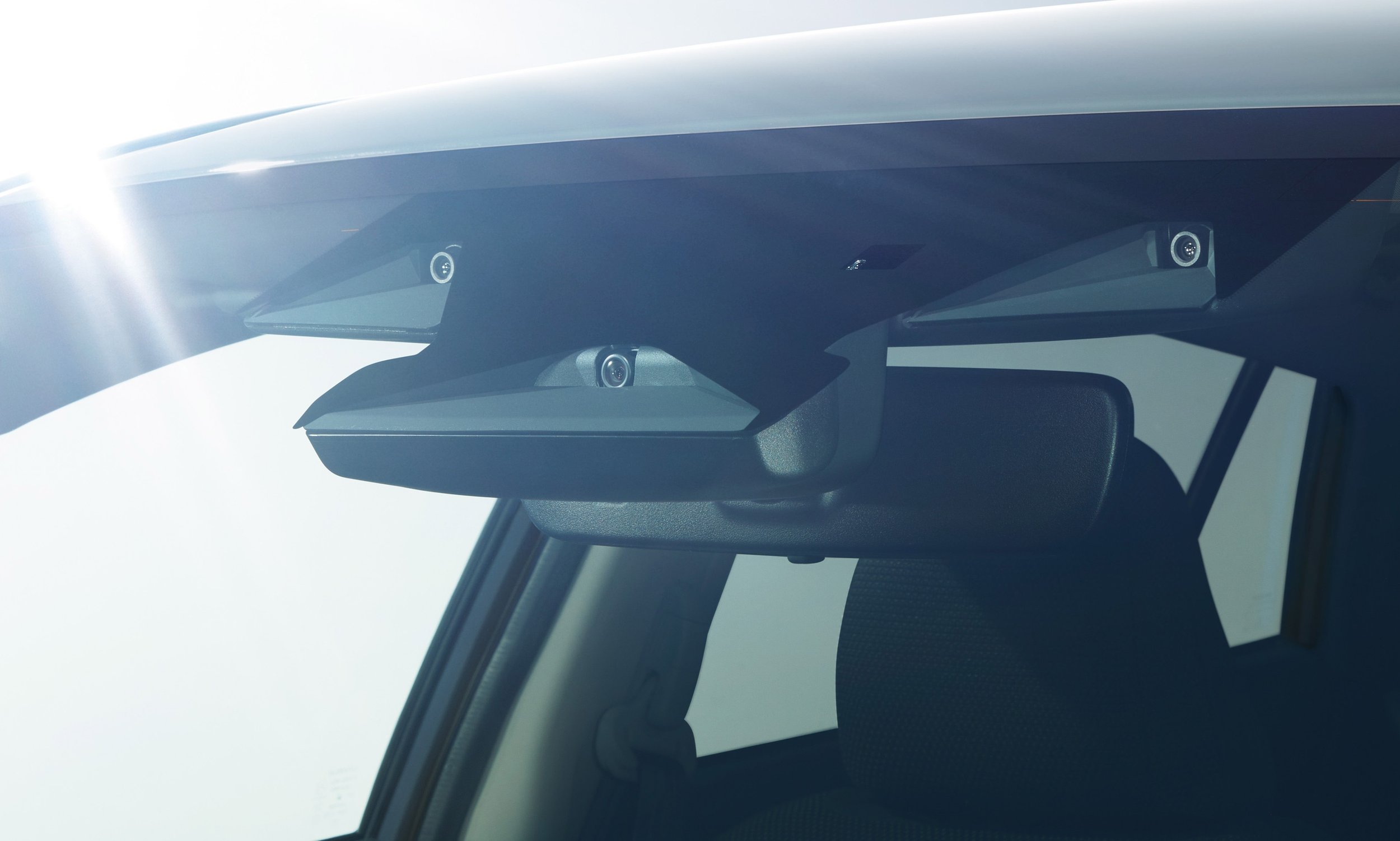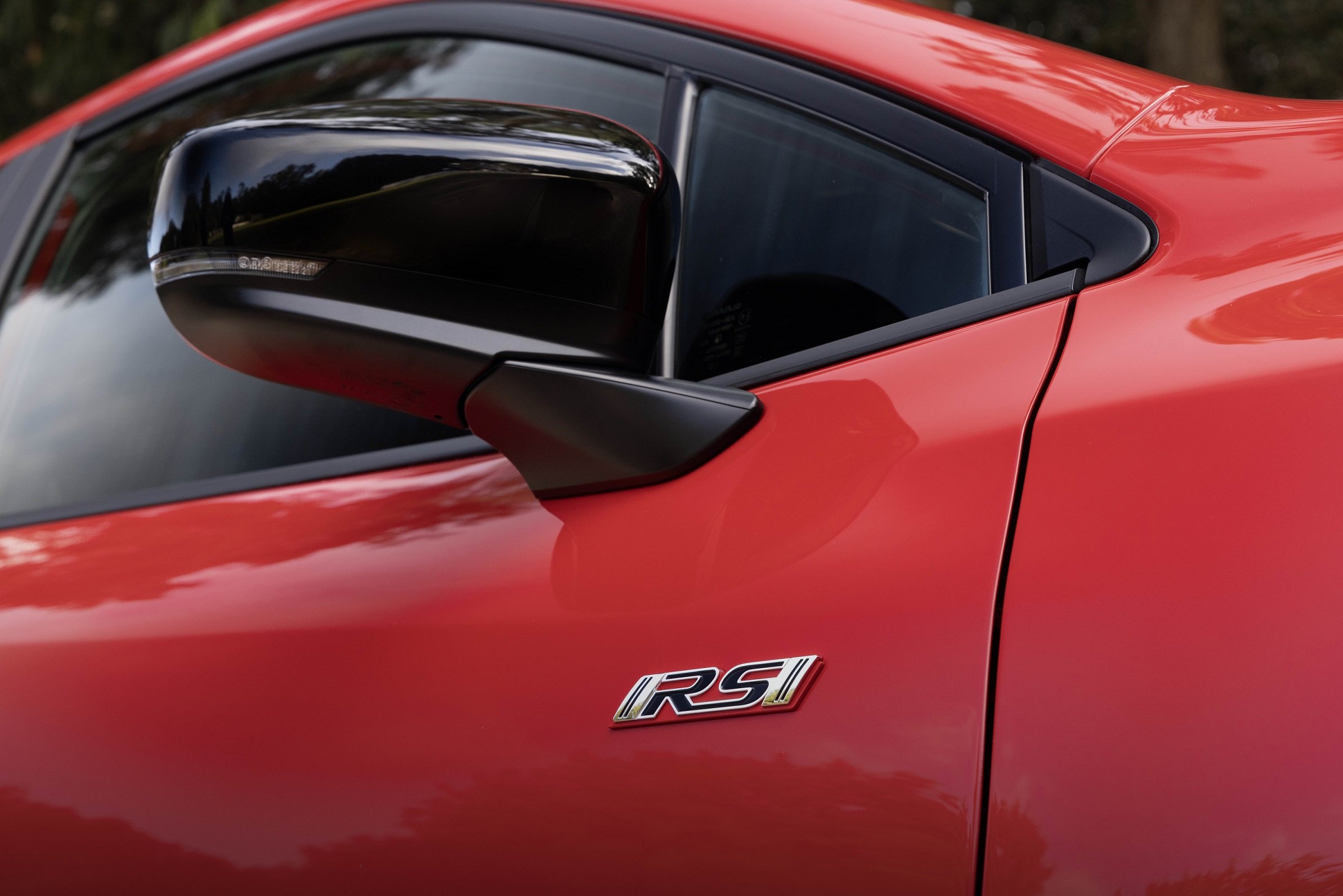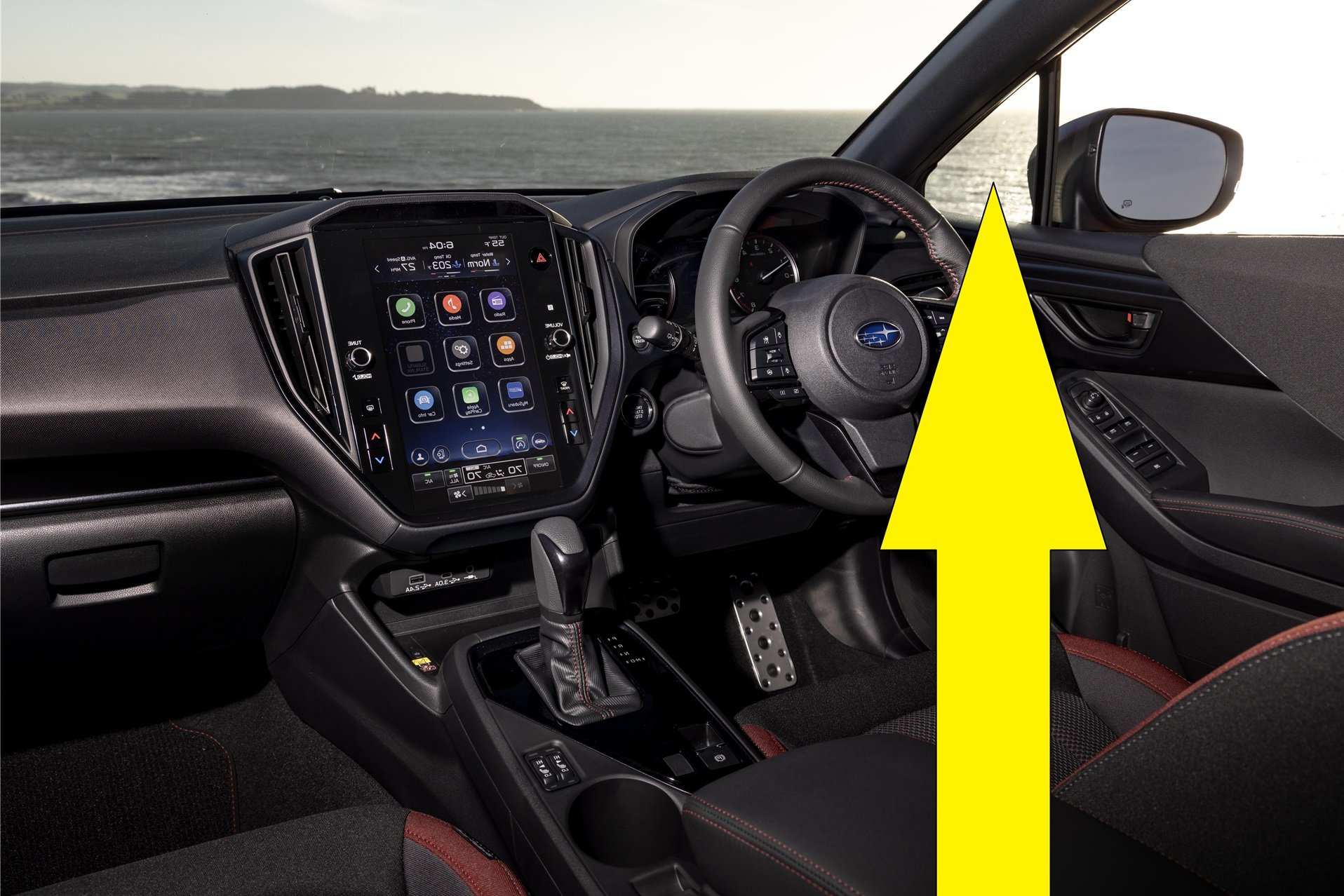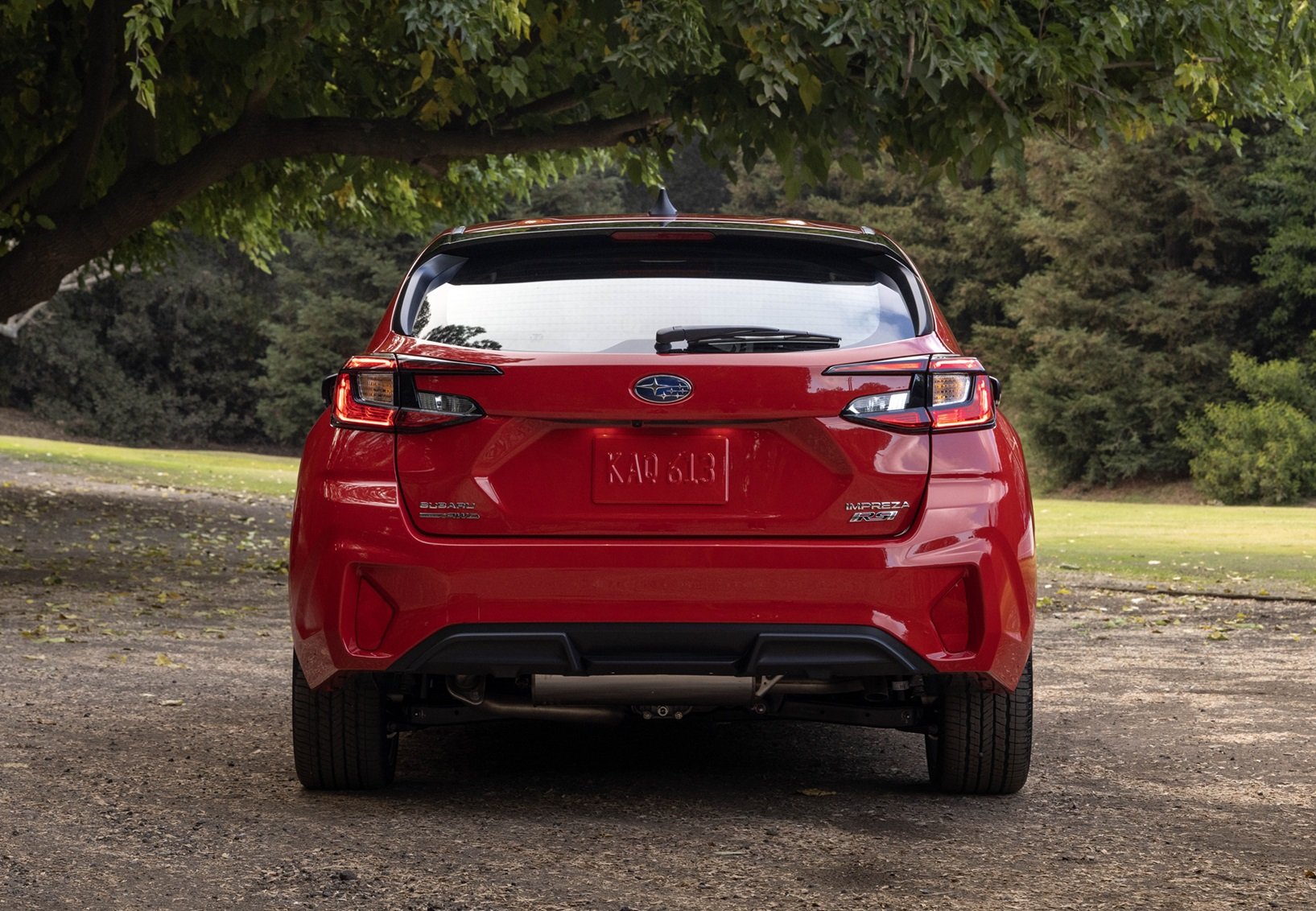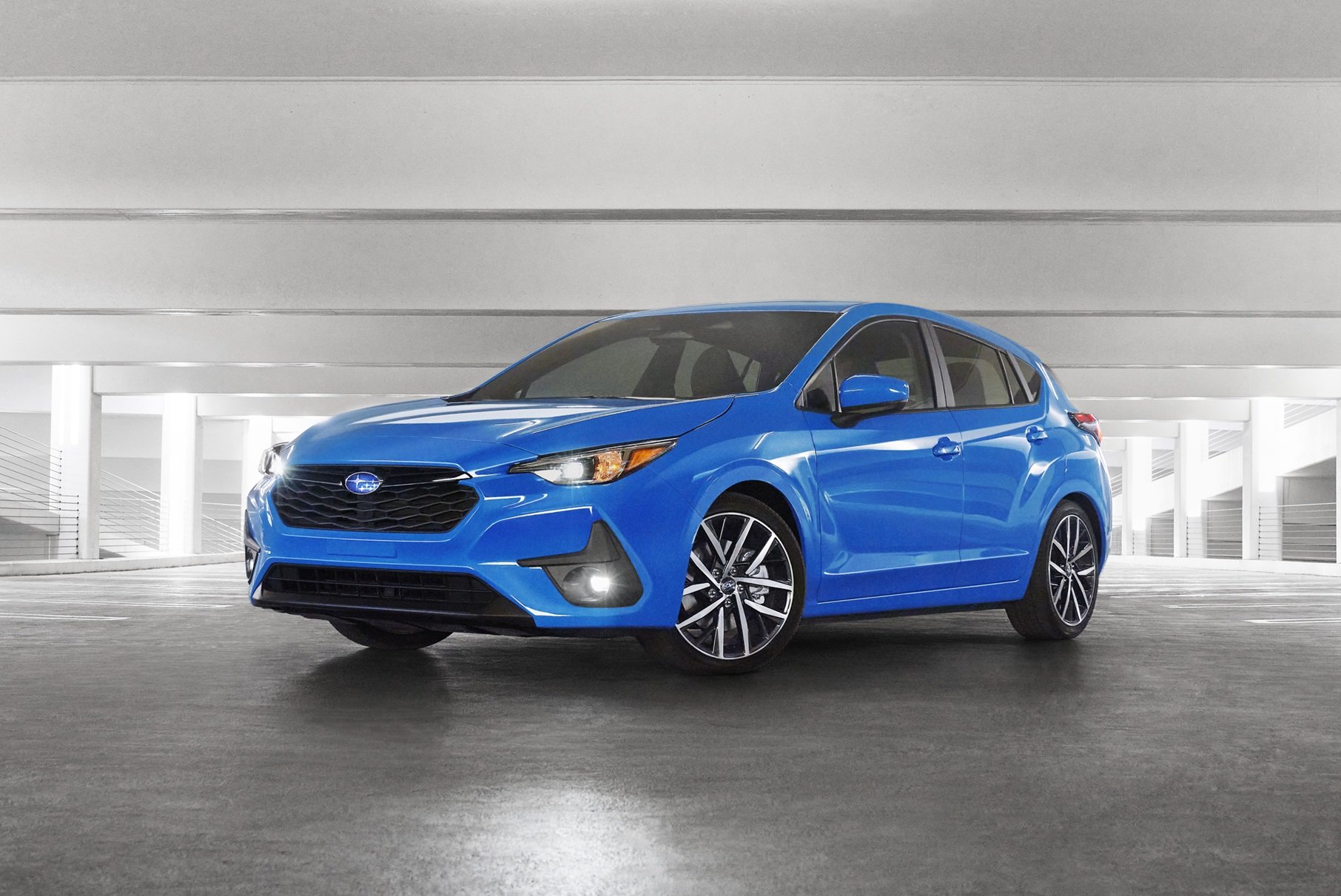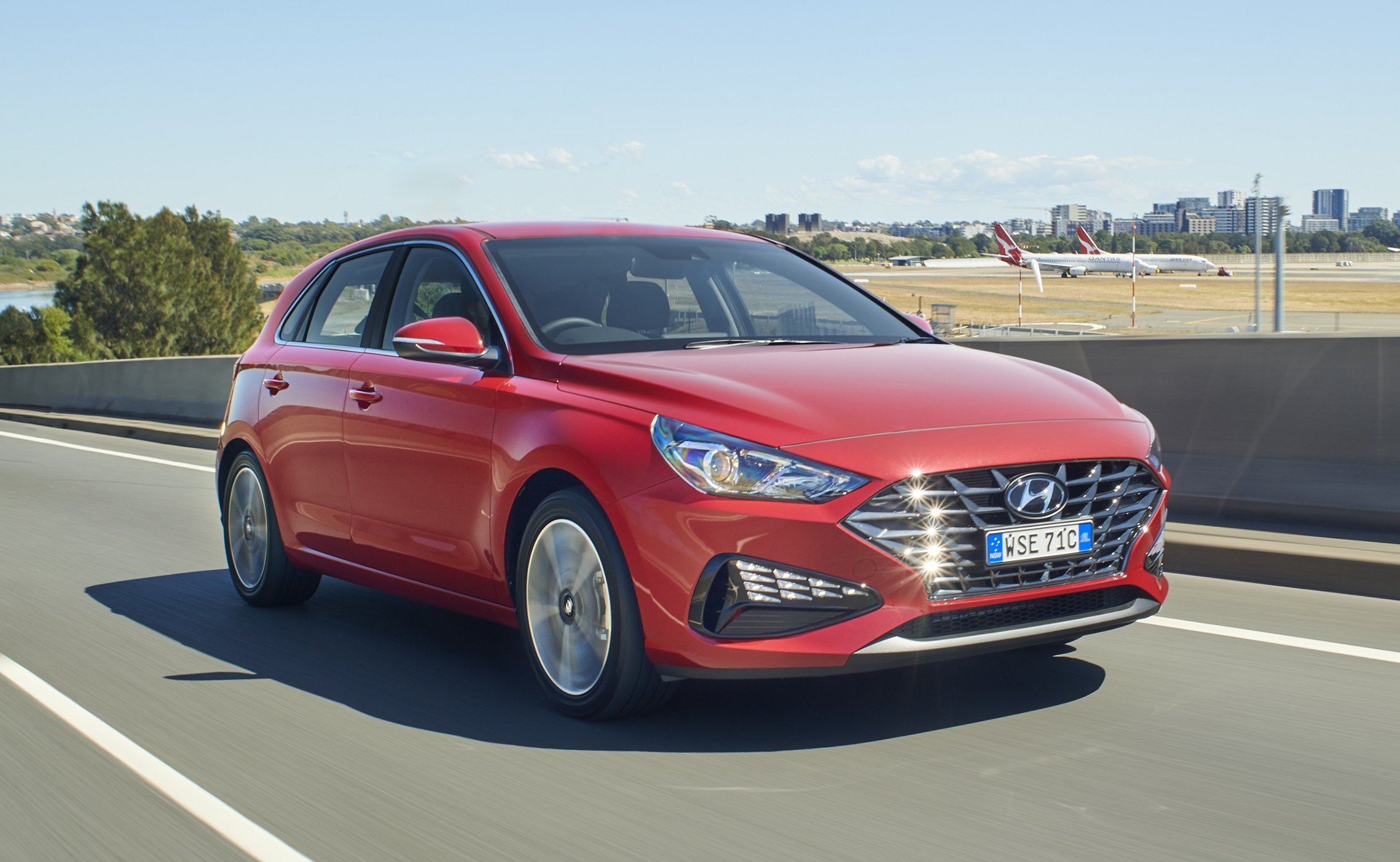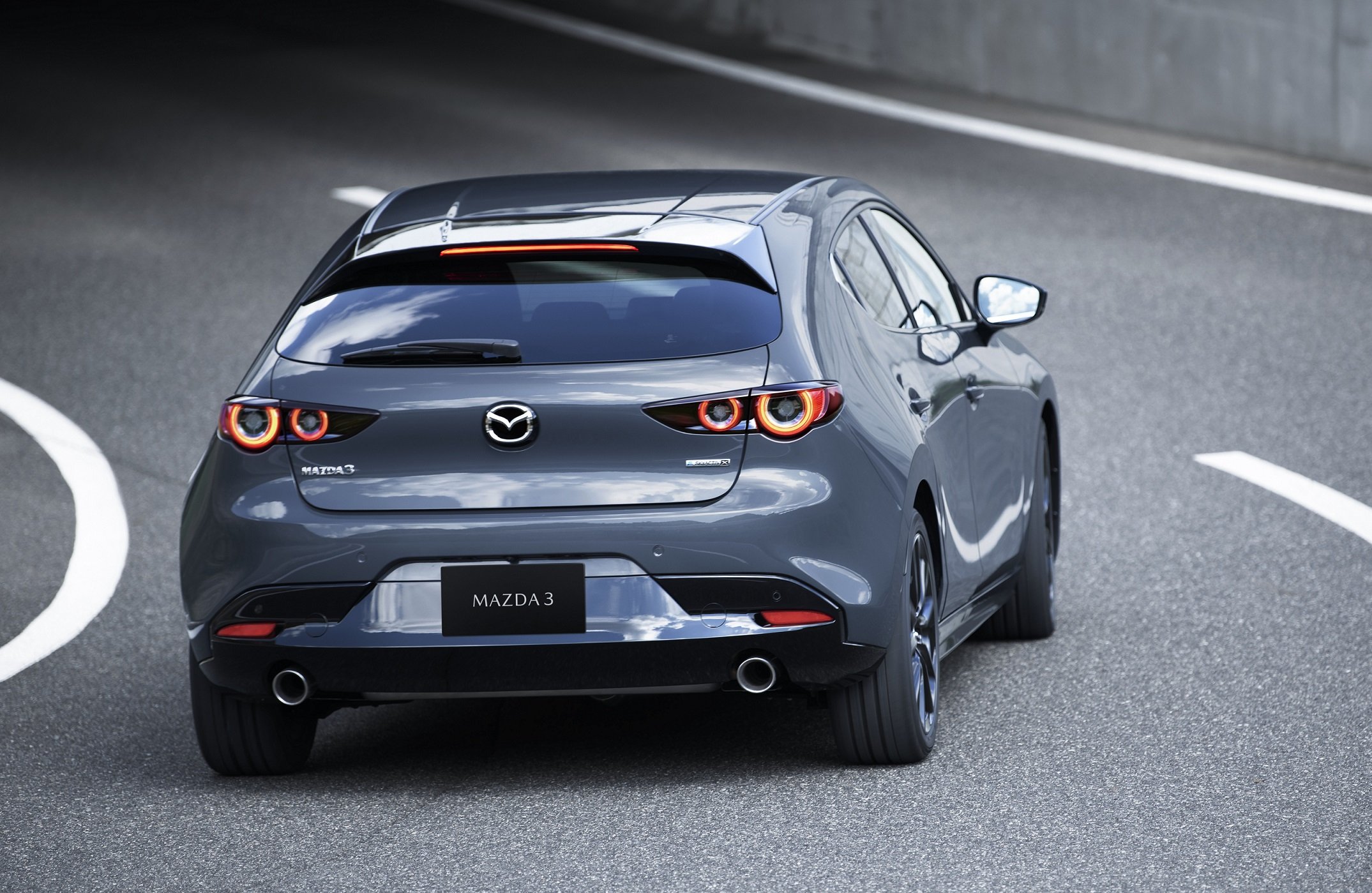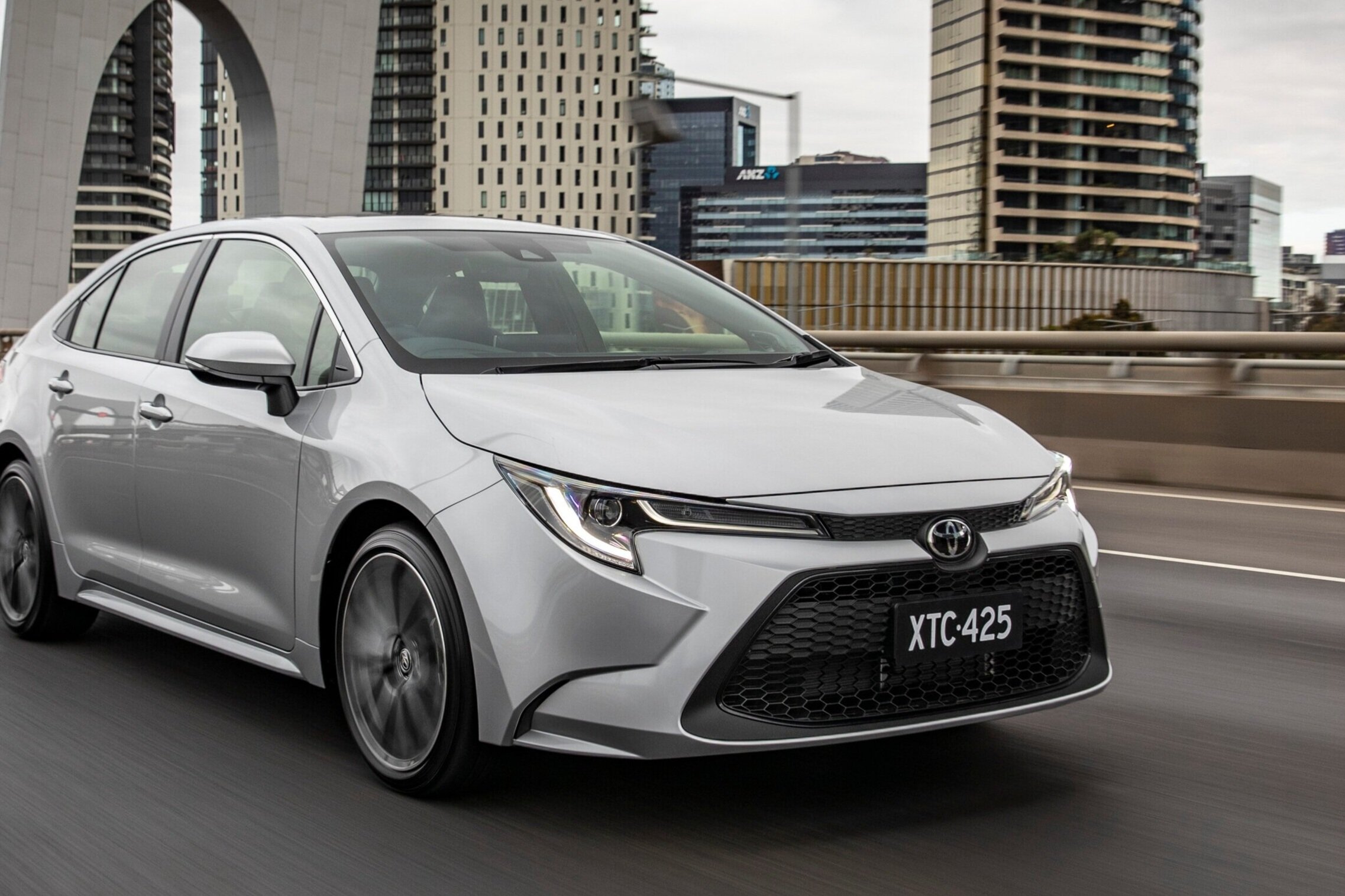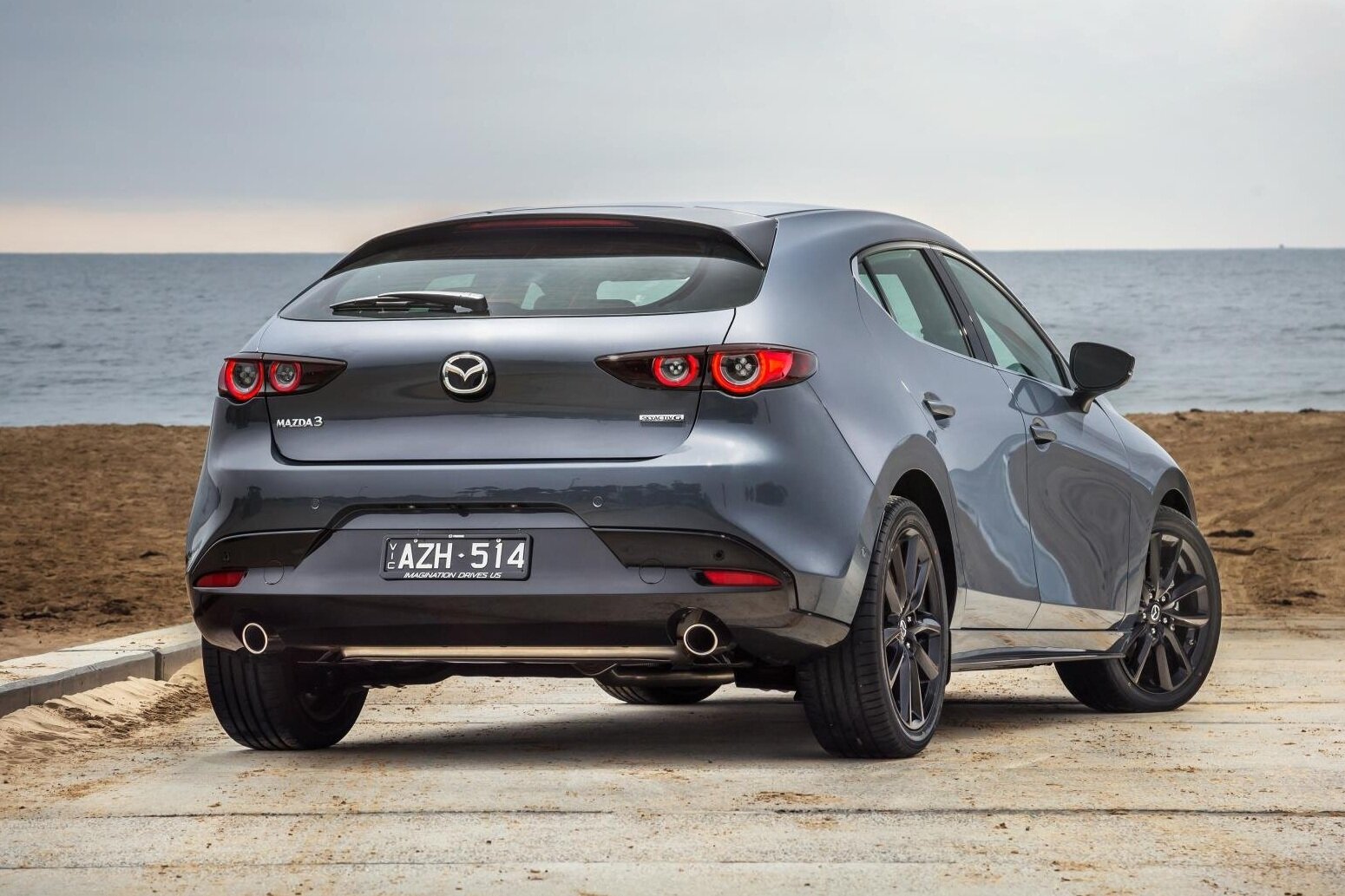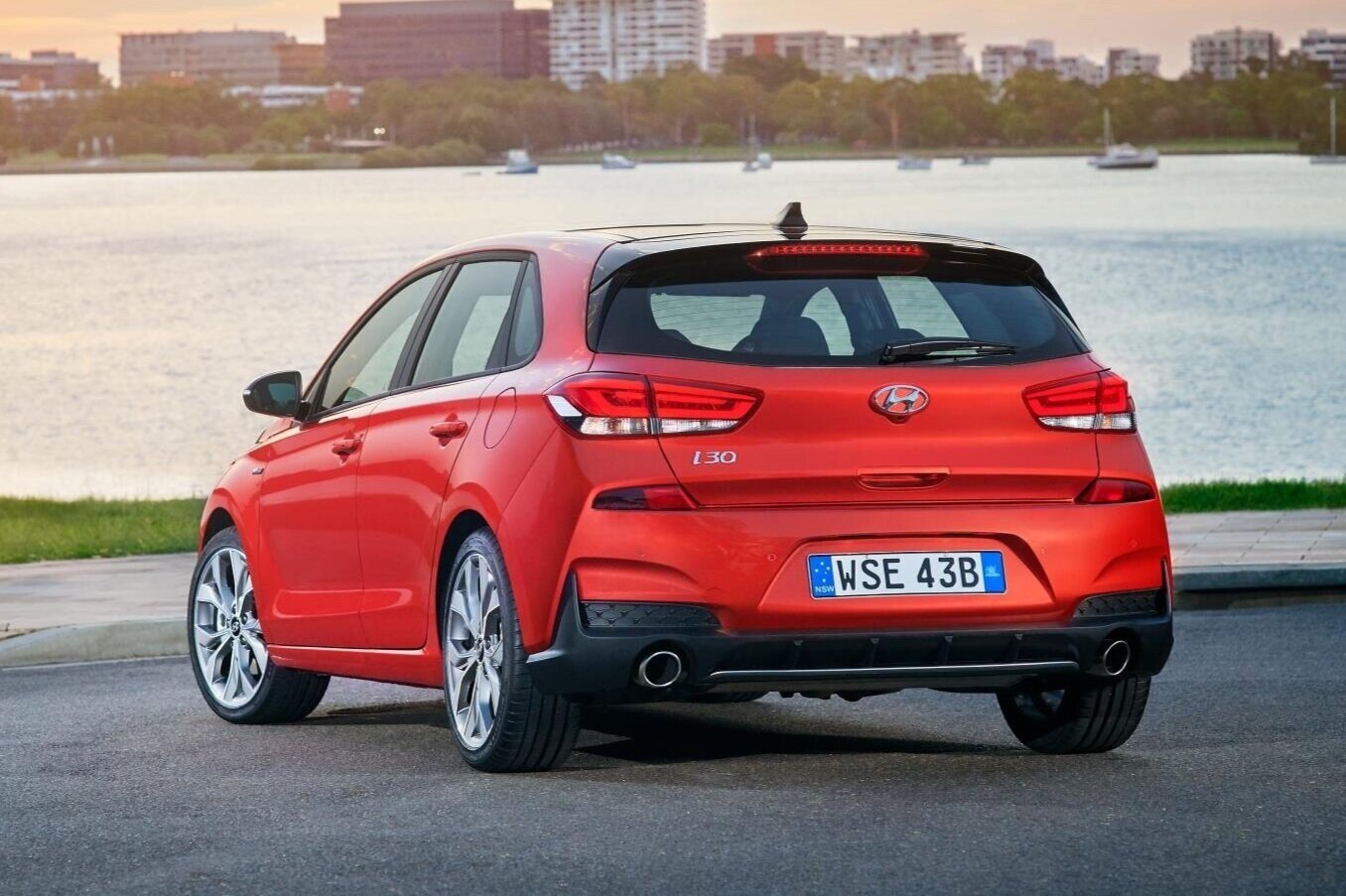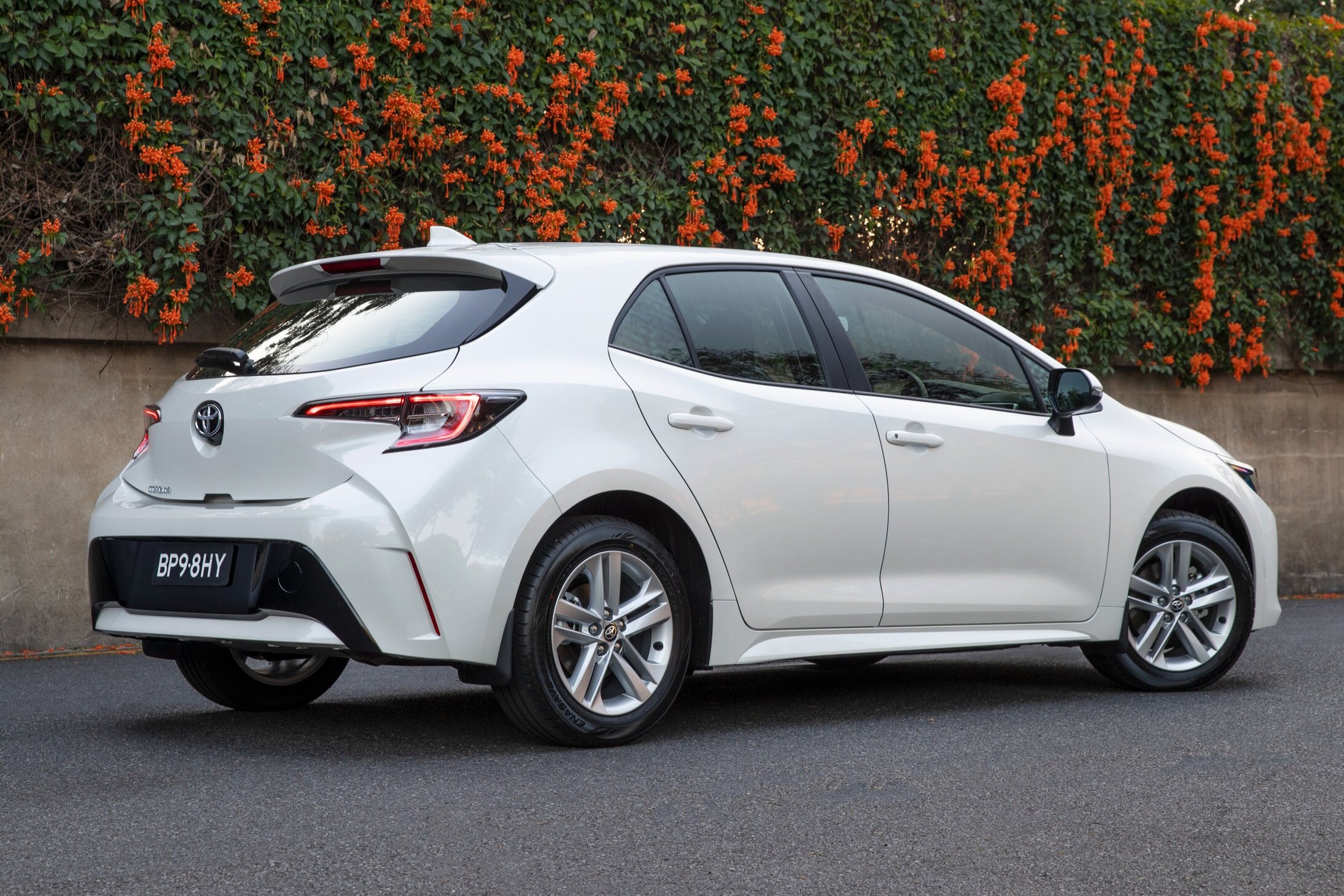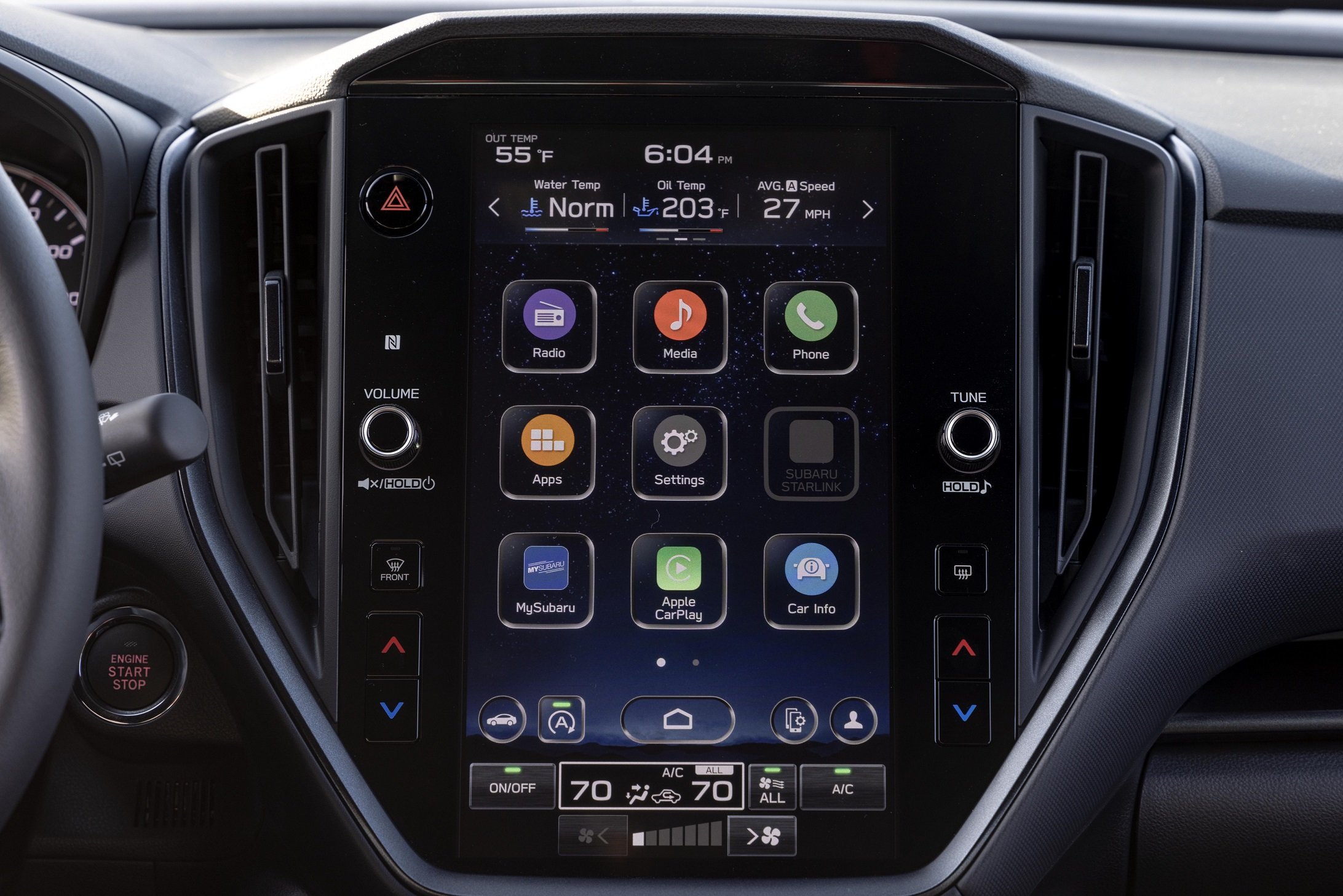Subaru Impreza Review and Buyer's Guide
If you’re in the market for a new car, consider a hatchback because the new Subaru Impreza has enormous appeal. With a robust driveline, reliable engine and fantastic driver-focused cabin, it’s an ideal multi-purpose runabout for your family.
US model shown ^
The Subaru Impreza is an under-rated, well-equipped and unsung hero of the brand’s model range and is more capable than most hatchbacks could ever dream of being.
They should sell more dirt-friendly Imprezas because symmetrical AWD is so damn useful in the wet, or on a gravel road, or even just traversing steep or slippery driveways.
But it’s even more than just a vehicle with a unique engine and driveline. It has what Subaru calls ‘EyeSight’, a suite of safety tech that is very well implemented generally without being too intrusive; and it could save your life.
Additionally, because Subaru plays the game of R&D efficiency like an extreme sport - the fundamental engineering of Impreza (especially the hatch) is also the fundamental engineering of the Crosstrek, Subaru’s small SUV >>.
Vehicles you’ll want to shortlist with the Impreza include:
When you look at them side-by-side: the Crosstrek is an Impreza hatch with 90mm of added ground clearance and wheelarch flares. On fundamentals: same body, same glass, same powertrain.
So, all of the fundamental performance and refinement benchmarks Crosstrek needed to hit in R&D are reflected in Impreza, which makes it a pretty high-quality small car.
This also means the hatch is practically a wagon, because SUVs are wagons, notionally, whereas cars these days are hatches. Tomato, tomato in the case of Impreza: the hatch is still a practical (if compact) loadspace with one foot in the ‘wagon’ domain.
Don’t worry, there are things I hate about Impreza: we’ll get to them.
Despite these plusses, Subaru manages to offload only about 250 Imprezas per month, versus 600 Ceratos, 800-ish Mazda3s, 2000 Hyundai i30s and 2000 Corollas.
Crosstrek out-sells Impreza by more than three to one generally, but I guess that’s because they’re almost the same price, and SUVs are seen by many as being somehow sexier. Despite the fact, in this case, that they’re basically clones.
The reason for Impreza’s lack of popularity and therefore sales I think is in part because as you step up through the Impreza range, you get more features with each increment, but you don’t get more performance. It’s always the same powertrain.
So, across the board, you get a 2.0-litre direct injected boxer four, with a CVT and symmetrical AWD. The engine works really well, but it’s only adequate, like the entry-level engines from all key competitors. They all aspire to adequacy.
Impreza goes okay with 115kW, but it’s not setting the world on fire, and that adequacy is all a lot of people want. For you, it’s most likely about getting home for dinner, not setting lap times.
But if you do want more performance, for example, Hyundai and Kia have 1.6 turbo versions of i30 and Cerato, and Mazda has the 2.5-litre atmo engine in Mazda3. There is also the WRX to consider, but the price goes up relative to that increase in grunt.
These all represent a massive upgrade in performance if you’re into that kind of thing. You’ll have to figure out if you want that extra mumbo or if you’d prefer a more conservative engine in favour of all-wheel drive which is going to have the opposite result: no wheelspin - ever. We’ll get into that in the engine chapter.
The one drawback with an Impreza is that there’s no halfway model between it and a WRX. You can’t have that ‘adequate’ performance step above the Impreza but below a WRX, irrespective of model grade. Whereas you can have a Cerato GT which does offer significant performance above a normal Cerato. Ditto the i30 and Mazda 3.
One could argue the appeal of an Impreza is there’s enough grunt to satisfy without going anywhere near some kind of performance aspiration - and that’s perfectly okay. Some people, possibly you, just want a smart, reliable and dependable small car and you can be assured the Impreza will make it out of any grassy, rain-soaked footy ground where the others will be stuck in front-wheel drive.
FEATURES & PRICING
On the model grades, from poverty to plush it goes: 2.0L, 2.0R and 2.0S. A simple three-tier choice made much easier than the alphabet soup of model grade choice Impreza used to be.
Fortunately the model grades are simpler due to fewer letters, but some effort is required to figure out how this Impreza hierarchy works. The lettering is still not intuitive: L, R and S are pretty vague. ‘R’ often stands for ‘race’ which is not accurate here, ‘S could mean ‘sport’ (except Impreza isn’t sporty) and ‘L’ usually denotes ‘luxury’ and either of these terms could make your instincts think that’s the top-tier Impreza.
Fortunately, the ‘L’ does make sense because the poverty pack Impreza is anything but. Don’t get carried away thinking it’s the works burger, but you do get:
EyeSight: Drowsiness & distraction warning, auto emergency braking, adaptive cruise, emergency lane keeping, speed sign detection, reverse emergency braking, blindspot monitoring,
wider rear camera angle
tyre pressure monitoring
Subaru Intelligent Drive (SI-Drive) – 2 mode
11.6-inch portrait touchscreen
wireless Apple CarPlay and Android Auto
wireless smartphone charging
LED headlights with auto off (dusk-sensing)
daytime running lights (halogen)
17-inch alloys (space-saver spare)
dual-zone climate control
Regardless of whether you’re buying a car for yourself, or for your 50 employees, you would want that EyeSight safety system, because it is very good, and it’s now got all the good stuff on the entry level model. That’s a massive win for consumers with a budget of about $35,000.
If you spend about $3500 more you get the 2.0R for about $38,500 which adds:
auto-dipping high beam & LED foglights
360-degree camera
forward camera & side camera
front/rear wiper de-icing
heated door mirrors
18-inch alloys (space-saver spare)
self-levelling steering-responsive auto LED headlights
front cornering lights (incorp. foglamps)
sports pedals
USB-A & USB-C charging ports (row 2)
Then there’s the S for another $3000 (roughly) which, at $42,000, adds on top of the R:
leather seats
sunroof
satnav
10-speaker Harman Kardon sound system incl. amplifier
DRIVING
Impreza is pretty composed, and the AWD is such a gift in the wet, and even more so on gravel roads, especially at low speeds. So that makes Impreza somewhat attractive to people living in regional Australia, except for the space saver spare tyre.
The reason space savers suck is because they don’t grip the road especially well, and they’re speed-limited, but this is the way the market has gone. It is feasible to DIY upgrade Impreza to a full-sized spare, but
As for actually unleashing the Impreza on the road, it’s a typical love/loathe scenario, mostly because there are moments where you just wish it had more grunt on regional open roads with a few corners, and yet in the daily running-around of suburbia (where, let’s face it, you’re probably gong to use this vehicle the most), it’s brilliantly suited.
At low speeds you might notice a bit of feedback in the drivetrain. There’s a lot of rotating parts in a constant AWD system, and that feedback is only occasional and not all that intrusive. It’s a bit of mild longitudinal shunting, which is improved in this new version compared with the old one. You might notice it while reducing throttle pressure, but still powering, like when going up a hill, in order to stop for an intersection.
But it’s not overwhelming or distracting - in fact most ordinary drivers may never even notice it. There’s a chance you probably don’t even know the phenomena being discussed here. In which case, let’s move on.
The CVT in the old Impreza had a mild ‘rubber banding’, which happens because the CVT is a pulley system and how you apply the throttle has a direct relationship with the steel belt in the pulley. There is a brain-dead minority out there who is endlessly commenting that, ‘CVTs are all rubbish’. But they’re quite wrong - they probably drove one once years ago when they were in their infancy and have banished them to the bad pile ever since, telling everyone they know in the process.
Subaru’s CVTs are pretty slick executions of the breed - and let’s not lose sight of the fact that the primary purpose of a CVT is to save fuel. Every time a CVT is turning and burning it is saving you 6-10 per cent off your fuel bill, compared with a conventional epicyclic auto that you would find in the Mazda 3, for exmaple.
In the domain of adequate performance and reasonable refinement, a CVT ticks all the boxes. And the main upgrade for Imprezas was in this area. You get this thing called SI-Drive. It’s basically two modes for the powertrain - Sport and Intelligent. But the new model is, based on what we know of WRX, marginally improved. They really have cracked it (the good kind) with this next iteration CVT. Don’t forget: it’s also saving you about 6-10 per cent on fuel compared with a normal auto.
Pick ‘Sport’ for more responsive acceleration and ‘Intelligent’ for greater economy. It’s a small but significant difference in character that you can dial in to suit personal preferences. So that’s nice if you do have the yearning to enjoy a sportier drive from time to time, without forking out for a bare-knuckle WRX.
What’s also noteworthy of something like an Impreza compared with the SUV as a concept is that both the sporty aspect and the utility aspect of such vehicles is usually compromised in order to make the SUV work. A Crosstrek is heavier than an Impreza, but has the same powertrain, so it’s not as sporty to drive, the acceleration is slower and the braking performance is worse, and being taller, the centre of gravity is higher, therefore it doesn’t handle as well.
And because Subaru managed to fail at making the Crosstrek’s boot any bigger than the old XV (despite being an overall longer vehicle) means the 291 litres in the back of an Impreza is exactly the same. So you’re not paying extra for any greater utility in a Crosstrek. The only benefit is that ground clearance, end of story.
Paying thousands more for a Crosstrek is just to gain 9cm of ground clearance, which detracts from what is already an excellent handling Impreza. The all-wheel drive makes it such a unique and well-equipped drivetrain for anybody who might seek to take off from the lights on a slope, in heavy rain, or even on a wet slope.
Steep driveways, mountainous terrain with partly blind intersections, unfamiliar gravel roads in regional areas (think: wineries, hot springs and day spas, farms and cottage accommodation), these are places where you can encounter moments that are opportune for all-wheel drive - but you don’t strictly need additional ground clearance because you’re not navigating rocks or tree roots.
Fit and finish on Impreza is pretty good. In-cabin noise is a little high at times, but it’s really only intrusive at big throttle inputs. When you’re just loping along it’s fine. The interior in the past was somewhat complex in the modern context of minimalising everything, but the big central portrait 11-inch touchscreen has improved that significantly. and if you want the opposite of minimalist, you’ll probably love it.
INTERIOR
Impreza has a really smart USB charging layout, with the USB charging ports located above the main smartphone charge pad (and stowage cubby otherwise), instead of in the middle of it where the phone hits the cable plug itself and adding wear-&-tear to the cable.
Cable management is emphatically improved in this new version with help from wireless Apple CarPlay and Android Auto. Yay. Finally, a carmaker that’s managed to make friends with both sides.
So, you plug in your USB cable if wireless charging isn’t available on your phone, and you stash the phone underneath the plugs/ports and simply lift it out when you’re done. Unlike other cabin layouts where your phone is in a constant battle with its own cord to take up those precious cubic inches of space.
There’s a lot of buttons on the Impreza steering wheel, and it’s going to take you a while to bookmark all those, mentally.
But it is well laid out, in a logical fashion: entertainment and calls on the left-hand side (favouring the infotainment screen), and all vehicle & driving related matters (such as cruise control, radar distance increments, drive mode selection) are all on the right-hand side, emphasising you, the driver.
There’s a bunch of supplemental information displays as well, most of which are, not quite ‘useless’, they’re just not ‘mission-critical’ - if the core mission is driving the damn car.
EyeSight can be a bit like that too, occasionally flashing some orange alert in the centre display area between the tacho and the speedo. The most common one is the driver distraction detection, which is a little camera that watches your eyeline and determines if you’re being distracted by boobies (or some such perceptible hazard in your wider field of view).
Problem is, the warnings are generally in too small a font and don’t flash long enough, in order to read them. So your primate brain just continues ignoring these so-called warnings as you continue making sure to avoid any scantly-clad pedestrians.
So, like many of these systems, EyeSight does tend to intrude, over-enthusiastically, but when it’s playing its main game it just might save your life, so perhaps we should give it a pass on its minorly intrusive disposition. Its the logic of having a condom on you: better to have it and not need it, than need it and not have it.
What’s nice to see here is the inclusion of reverse emergency braking on even the base model Impreza. In other brands, this is a feature switched off until you pay extra for the more premium models. But considering that the majority of child fatalities in vehicles occur in Australian driveways at home or the workplace, this is a morally sound choice Subaru has made in the product planning department - the kind of place where accountants rule with a fist made of nickel-copper-silver-gold alloy.
One thing Subaru does really well is the front wing mirrors, which are stuck on the doors, as opposed to in the triangle where the A-pillar meets the doors. That really reduces the visual bulk of the mirror installation and in some situations it significantly improves the clarity of the forward vision you get in this region, as the driver.
Typically it’s a plus when you’re nose-up on a crest and you’re looking for traffic turning in front of you, across your path. This means you can enter a sweeping left or right bend and successfully locate yourself relative to the apex by tilting your head a couple of degrees and not be blocked by the mirror.
The one sticking thorn of indignity in driving Impreza is the engine stop-start system. It feels like one of those systems that doesn’t use the starter motor to get going again - it’s probably shutting the engine down with one of the pistons just over top dead centre on the compression stroke, so all it has to do to get burning again is fire the spark plug, essentially. Even so - there’s a delay between you going off the brake and the powertrain being completely good to go...
…and sometimes that delay is longer than I would like. Or it happens in places where you absolutely don’t want or need the powertrain to go into stasis, such as low-speed parking-type maneuvers.
But also, the restart detracts from overall refinement, unacceptably so, in my view, considering the tiny amount of fuel it saves. It’s not a deal breaker, but it’s a characteristic you’ll need to tolerate if your marriage to the Impreza is to be a happy one.
Perhaps work on making its deactivation part of your initiation sequence when you first get in, and happily Subaru puts that big ‘auto stop/start’ icon on the main screen where it’s easy to press before setting off.
Safety
Subaru took the bold decision, many years ago now, to make sure their cars earned five-star safety across the range, and were one of the first carmakers to do this.
They knew how important that would be to ordinary consumers, and it has certainly paid off. They’ve continued that with Impreza and unlike other makes and models which have had numerous revisions and prick-teased updating safety technology like it’s some kind of game with people’s lives, Subaru didn’t mess around.
Impreza was a five-star car from the start, and remains so in both active safety and crashworthiness criteria. You add it to the EyeSight system (above), and it’s still a brilliant, class-leading vehicle in terms of the safety systems on offer.
More on the US market’s Subaru Impreza safety rating >> from the Insurance Institute for Highway Safety (IIHS), until ANCAP gets around to rating Impreza and/or Crosstrek in 2024 - most likely using data from EuroNCAP’s destructive testing.
But generally speaking, it’s very, very hard to see how Subaru would allow its bread-and-butter hatchback become anything less than the epitome of a very safe, five-star vehicle by the latest crash test protocols.
Here’s how the Crosstrek handled the small overlap test in the US, a test our ANCAP protocols have not yet adopted, keeping in mind that the Impreza is the same basic platform underneath as Crosstrek. (Impreza is also as-yet untested as an independent model.)
The Crosstrek received very good scores, but you can see the rating details for this 2023 Top Safety Pick here >>
DRAWBACKS
Weight is more than just a driving enthusiast’s problem and in fact it has a far more profound and direct affect on ordinary consumers every single day. Weight ruins everything when it comes to cars, and this is where efficiency is important to understand.
If there has to be a given amount of weight in making a vehicle, you want it to matter, it needs to serve a purpose, otherwise every kilogram of unnecessary weight is work for the engine to do. Meaning more energy needs to be consumed to make that additional kilo move. And stop, obviously.
In the case of Impreza, it weighs exactly 60kg more than the old one, and that’s a modest, if disappointing, 4 per cent increase to lose available boot space, get no performance improvement, and have the same legroom as before.
The same atmo 2-litre Boxer is still making 115kW (at 6000RPM), the old Impreza took 345 litres in the rear, and the wheelbase is still 2.67 metres meaning there’s no appreciable improvement in the basics this vehicle offers. The only structural change is 15mm of additional length and 5mm of width, neither of which does anything to improve the overall product to the consumer.
But it is driving around with three big bags of potatoes in the boot, well, 60kg worth, anyway. The reason this matters is because on one hand Subaru is pushing its Crosstrek & Forester Hybrids >> which are next to useless, but here’s their notionally small car that has worse fuel economy than the old model.
On the combined cycle lab test, new Impreza does 7.5 litres per 100km compared with 7.2 in the old model. So fuel consumption has gone up by 4 per cent. This means emissions have gone up 4 per cent as well: 170 grams per 100km versus 163 in old Impreza.
Running the same 18-inch wheels and tyre profile, the same 50-litre fuel tank, fewer buttons and switches, and no appreciable physical changes, has Subaru made the front overhang slightly longer and that’s where the extra 60kg has come from?
I'll help you save thousands on a new Subaru Impreza here
Just fill in this form. No more car dealership rip-offs. Greater transparency. Less stress.
MAIN COMPETITORS
Impreza fights in one of the most price-sensitive and hotly contested segments in the car industry: The so-called 'small car' category. Even though they're not actually that small anymore, it's just what they're called..
In a sense, Impreza is fighting with one hand tied behind its back (at least on price) because all model variants feature symmetrical all-wheel drive and those extra driveline parts aren't cheap. Nor is the Boxer engine, compared with a more mainstream upright 4-cylinder with turbocharging. All model grades feature the awesome EyeSight safety system, and none of that tech is free, either.
These factors pump up the price - but they also make Impreza a compelling ownership proposition - you’re getting more for just a little bit more. But given that its rivals have been continuously updated in recent years, is Impreza still good enough?
Punchy 1.6-litre turbo engine (150kW/265Nm) in N-Line and N-Line Premium variants
hatch and sedan available
front-wheel drive
bigger boot: 393L (+35%)
More on Hyundai i30 >>
More potent 2.5-litre atmo petrol engine in G25 GT & Astina (139kW/250Nm)
hatch and sedan body styles
conventional epicyclic auto transmission refinement
more upmarket interior
hatch and sedan available
front-wheel drive
More on Mazda3 >>
Decent hybrid drivetrain (that does actual work)
adaptive cruise & emergency braking standard on poverty pack
hatch and sedan available
front-wheel drive
cheap, good re-sale value
More on going hybrid >>
If you’re going to spend a great deal of time actually sitting in this vehicle, there’s a strong argument for making it the most comfortable option you can get - especially when daily city commuting is involved. In this kind of scenario, the Mazda3 is going to be the most impressive >>.
The Corolla is certainly the cheapest option, but you don’t get the interesting cabin and plushness of either the Mazda or the Hyundai. But if all you need is a white bread runabout Corolla >>, it’s hard to beat as a second car to care very little about. And that’s perfectly okay if adequacy is the name of the game: five seats, 2WD, a basic hybrid, simple interior.
But if you’re a warm-blooded mammal with a pulse, and driving is a task you actually enjoy, the i30 is undoubtedly the best of the bunch to drive in terms of outright performance.
The Impreza might have all-wheel drive for light-duty camping and winery tours, but i30 with 1.6 turbo is something else >>. Light, nippy, grunty in all the right places and with lightning quick gearchanges, you can actually feel it working away, squirrelling up the twisty backroads while also being very nicely equipped and engaging to turn-in and fire-out, particularly the N-Line versions.
And if you want something between the i30 N and the Mazda 3, something with poke, but is also nice to be stuck in Monday to Friday, consider the compelling Kia Cerato GT >>
The exact thing that makes small cars so good is exactly the same thing that sucks about SUVs: running costs, price and value.
An Impreza uses 7.5 litres per 100km, based on the official combined cycle lab test. The Crosstrek uses a fraction less fuel, somehow (because technically speaking, it should absolutely use more fuel, not less), but it costs more money for no appreciable advantage aside from that 9cm of additional ground clearance.
Same goes for Forester, Sportage, CX-5 and RAV4 petrol versions which all cost $42,000-plus, and the only tangible benefits you get in those vehicles is a bit of additional ride height, slightly bigger boots and better towing capacity. And at $42K you won’t be getting the same level of equipment as a decked-out Impreza. And they’ll all consume more fuel over their lifetime.
If, for example, you’re buying a second car as a runabout - perhaps to pick up the kids from school, do the weekly grocery shopping, take the dog to the park, and even to let your 16-21 year-olds learn to drive in - then Impreza is one of the ideal choices for that. Why? Because it covers all bases.
It has the AWD so they’ll never get stuck in the music festival carpark, or come unstuck getting there in pouring rain, there’s enough room to ferry their mates around, it’s one of the safest vehicles to drive or (unfortunately) be involved in a crash, and it’s pretty good on fuel. In fact it’s got the same 7.4L consumption as a Hyundai i30, which is strictly front-drive.
CONCLUSION
Here are some points of difference if you’re hesitating about an Impreza.
If you're shopping for an Impreza-sized car, here the features and the unique points of difference for Subaru Impreza that are objective criteria you should consider it for, they really matter in the context of A) how you personally are going to use the vehicle and what you need it to do, and B) the environmental conditions in which the vehicle needs to function.
Does it need to work in the city for 99 per cent of its life? Does it need to work in a regional or rural setting where wet grassy verges, muddy gravel single-lane driveways are the only way in or out? Does it rain a lot where you live and are there plenty of steep hills in which a front-wheel drive might succumb?
The two major points of difference with an Impreza, compared with most cars in the rest of the market, are the EyeSight® safety system and Symmetrical All-Wheel Drive. So let’s deal with both of those.
EyeSight
EyeSight® is a brilliant camera-based system. There’s three cameras in the top of the windscreen. They’re stereoscopic, meaning multiple images are taken and the computer analyses them for depth perception - just like our human eyes.
This gives you a bunch of safety features, like, forward collision mitigation where the car will warn you if it thinks you are about to crash into a car or person that’s stopped ahead. That’s brilliant. It’ll also stop for pedestrians at low speeds.
EyeSight also delivers adaptive cruise control (ACC), which is a huge plus for ordinary driving (not just for keeping you at stopping distance from a crash).
If you haven't driven a car with adaptive cruise control - which is pretty rare these days, admittedly - you really should give it a go. Unlike the conventional cruise control we’ve become adept at using over the last 30 years or so, adaptive cruise uses those EyeSight cameras to monitor the traffic ahead and increases or decreases your speed relative to a vehicle in front.
Let’s say you set the cruise to 110km/h on the freeway and you encounter some slow-moving congestion ahead. Perhaps a couple of trucks are doing 80km/h (a common scenario).
The car with ACC will automatically come up behind the congestion; it will identify this problem and then it will just adapt by slowing down and maintaining a safe, pre-determined following distance as set by you.
As the traffic opens up again, you’ll just automatically speed up again to the preset 110km/h. It happens seamlessly, without you doing anything you still have to monitor what the vehicle is doing, of course, because if you’ve entered an altered speed zone, and the traffic disipates, the ACC will speed up again, unaware of the changed speed/traffic conditions. Either way, it's a major benefit, it just doesn’t replace your cognitive task of being in control of the vehicle.
The brilliance of Subaru Impreza is that you get this adaptive cruise control functionality built-in with EyeSight® at about $29k plus on-road costs. Unfortunately for Impreza, adaptive cruise is now on the Mazda3 base model at the same price point, so it will be a matter of personal preference for whose system you can live with best. Subaru has been refining and tweaking EyeSight for years, whereas Mazda only made adaptive cruise available on the previous generation top-spec SP25 Astina.
But, today is today and Subaru has lost some of that lead it previously had, so if you plan on doing a lot of freeway driving in your new small car, I seriously recommend trying both systems. You might be surprised how good EyeSight really is.
SYMMETRICAL AWD
Symmetrical AWD is the huge advantage for Impreza. It means the tractive effort is maximised every time there’s a reduction in the amount of grip between tyre and road. When it rains, or you go to the snow, or you come across ice or frost, wet grassy slopes, mud or unsealed roads, you’ve got the same amount of drive being transmitted to the road but it’s divided by four wheels instead of two. So, effectively, the grip level can drop by half and you can still keep going.
Many vehicles with AWD, notionally, are actually just front-drive most of the time and they wait for wheelspin to engage the AWD system. That’s so-called on-demand AWD, and while it’s an okay system, it’s really always playing catch-up because it has to wait for wheelspin before it does its thing. Often by the time it does kick in, it’s too late.
It also remains very difficult to find a car this size with AWD at these prices. Essentially you get the benefits of AWD that you would have in a big bulky SUV but you're paying something like $15-20k less - which is a major advantage and money saved.
Plus, you don’t get the additional bulk which requires harder acceleration (and poor handling) as a result, so there’s a fuel economy benefit as well.
CHOOSING THE RIGHT BRAND
What does work in Impreza’s favour is the nature of being not an SUV - which is even bigger, even heavier and they cannot compete on driving dynamics.
It’s worth remembering that when you buy a new car, you’re not just getting hitched to the car - you’re also jumping in the sack with the brand. And here, I’m quite pleased to report Subaru is unlikely to cheat on you.
Meaning: They’re right up there at the very top of the customer service pyramid. Subaru really does go above and beyond in respect of customer support and consumer law compliance - even after the warranty expires. This is a vital aspect of vehicle ownership that many buyers overlook in their infatuation with this or that - but I have to say, engaging those rational neurons and jumping in the sack with the right brand can make all the difference if there’s some problem down the track.
In my view you can trust Subaru to do the right thing, and this is one of the main factors orbiting my decision to put them on my ‘recommended’ list. Trust is a huge factor, and in my view not all brands are trustworthy.
Servicing, costs & warranty
Once upon a time, Subaru’s service intervals were for may years stuck at six months/ 10,000kms, whichever came first. But that’s long gone now and it’s every 12 months or 12,500km, whichever comes first.
You’ll only be visiting the dealership once a year and Subaru has reduced the costs of dealer servicing yet again, compared with the previous Impreza. You can download the Impreza capped price servicing schedule here >>
Servicing costs and schedule (whichever occurs first, remember) are as follows, as listed on Subaru’s website:
Total 5 Year Service Plan Price(including GST)$2026.94 (that’s $380 cheaper than before: $2407.64)
Platform & dynamics
This Impreza platform is Subaru’s global architecture and you can tell straight away that it’s very rigid. That’s good.
It’s an engaging, direct sort of drive experience, meaning it does what you tell it to do to, when you tell it to do it. It’s not disengaged from the road and is sumptuous in the way perhaps a Lexus is or even a Corolla in that ‘I just wanna get from A to B’ driving experience.
Most people test driving a car for the first time don’t spend enough time actually evaluating the car itself. Let’s face it, most people spend their lives routinely driving one or maybe two cars at a time - the same cars, day in, day out, for several years. But when you get in a new car, it feels extremely different, seductively so. The controls feel nicer, the steering feedback is better and the whole experience is light-years away from your old-jeans, A-to-B runabout.
That doesn’t even take us to the new technology compared to your old car - think cassette tapes to CDs, to Bluetooth.
So, the cognitive demands are high, and frankly, there's not a great deal of actual robust evaluation taking place, especially in the routine test drive around the block from the dealership.
US market model shown, reveresed for illustrative purposes
What I can tell you about the Impreza is that Subaru is really good at ergonomics, meaning all of the design and engineering factors regarding your interaction with the vehicle. It includes where are the controls placed - all the important bits within one finger’s reach, or as close to you as possible, and their instinctive operation. Does it take one action to turn something on, or do you have to think through setting something to the point it distracts you from the road? Does the car tell you what’s going on without overloading your ability to comprehend?
In the Impreza's case - yes. it does this all quite intuitively.
Your two central instrument displays convey only the important functions directly ahead of you in the dash cluster, and then there’s the centre stack and a secondary information display above that. All of that information is quite simple to glance at and you can accommodate the information almost straight away. So that’s really good.
Nobody’s going to accuse Impreza of being the most beautiful car you’ll ever see, either externally or internally. But certainly it’s ergonomic integration is absolutely brilliant. One of Subaru’s engineers once told me they intuitively prefer buttons on the steering wheel - which is why there’s so many - because that’s safer for the driver to use, rather than searching on the centre stack or hidden above your right knee on the dash panel. It makes perfect sense.
The steering wheel itself, for example, feels fantastic. You grab it and you go: ‘Yeah, WRX’s little brother… I can see that’. You’ve got the paddle shifters, if you want to drive the CVT as a manual. You’ve got umpteen buttons on that wheel, and I haven’t bothered counting them - there’s probably twenty - but it might take you a while to figure out what they all do. When you can play that wheel like a Stradivarius, it’s probably quite practical. Put the kettle on.
GPS & CABLE-FREE CONNECTIVITY
The top two spec levels of Impreza come standard with GPS and the news flash there is: it’s still TomTom. Thank heavens for that because in-house GPS systems designed in a bespoke way by carmakers are still typically awful. TomTom only does GPS; they know what they're doing, they do it very well. So, that’s a plus.
But if you’ve moved on and use your smartphone for everything, like nearly everybody else, you have Apple CarPlay® and Android Auto™ connectivity across the range - and it’s wireless!
The big new touchscreen, despite being 11-inches in portrait orientation and dominating the dashboard, it is possible to get the hang of it so it becomes a relatively low-level distraction.
Icons are big, the text could be a bit bigger, but it’s all fairly logically placed, and you can move the icons around if required. So you can position the ignition auto stop-start somewhere convenient to turn that sucker off once you climb aboard.
The AC temp controls can increase or decrease using conventional buttons when you need a quick temp change, and you can hit the windscreen demister button very easily. It’s good Subaru as been sensible here, using a button, because HVAC systems are vital, unlike over at Tesla where everything is done via the touchscreen. But touchscreens can fail. Less so these days, admittedly, but using the screen constantly means it has an increase wear rate over a button you might push once in a blue moon. So if you need rapid defogging so you can see where the snowy, icy mountain road is, whacking that button reduces the likelihood something fails.
Alternatively, the rest of the HVAC system’s touchscreen controls are fixed to the bottom of the screen and don’t have to be ‘navigated’ via sub-menus. More distractions removed from a big, showy (possibly compensatory) 11-inch touch-screen.
Engine & driveline
The Impreza, like the new Mazda3, offers one engine and one transmission. Except unlike the in-line four-cylinders in the Mzda or Corolla, the Impreza has a 2.0-litre Boxer petrol engine and a CVT. Now, on this CVT front, if you're in the market seriously considering Impreza, you're going to be watching 50 thousand different on-line reviews and a lot of those reviewers, historically, have been pretty critical of the CVT.
I think that’s unjustified.
Early CVTs tended to drone on and weren’t that engaging to drive, but I think Subaru’s done a great job tuning this current generation of CVT and, on objective criteria, you’d have to say that this CVT is as good as a good conventional automatic.
It’s not the same as a conventional auto, because it’s a different drive experience, but it’s got different strengths and weaknesses. Overall, if you put all the usual driveability factors into a blender, the smoothie coming out is going to leave you saying ‘it tastes about the same as a conventional automatic transmission’.
Most car reviewers suffer from a weapons-grade dose of confirmation bias when they assess CVTs. They look for reasons to hate the CVT and in this case, it’s completely unjustified. Often because they expect a CVT to drive like a regular auto or because they drive so many different cars the rational argument for the regular consumer - who doesn’t drive lots of different cars - gets lost in translation.
If you are confused about CVTs and even DCTs (dual-clutch transmissions) and DSGs (and all this nouveaux transmission terminology and technology generally) I demystified it here >>
Engine performance is kind of important as well. You can basically have any engine you want as long as it’s the 2.0-litre direct-injected Boxer petrol engine. The advantage is low centre of gravity because the pistons are operating horizontally. It's a Subaru thing; the boxer engine is one of the foundations of the brand.
The outputs are up there, compared with other leading 2.0-litre engines from competitors. It develops peaks of 115kW at 6000rpm and 196Nm at 4000rpm and it’ll run on standard 91 Octane unleaded fuel, not the expensive premium stuff. It’ll go better than and drink less fuel than any engine with the old style multi-point injection. If you're worried about keeping up with the Joneses, don’t be.
Obviously, though, it does not compete with the likes of Mazda's 2.5-litre SkyActive engine in the upmarket G25 Evolve, GT and Astina offering 139kW/252Nm. Nor does the Subaru 2.0 keep up with the 1.6-litre turbocharged engine in the Hyundai i30 N-Line and N-Line Premium pumping out 160kW/265Nm.
But there’s something to be said for even tyre wear with equal drive going to all four wheels, unlike the others punishing the fronts with braking, steering, tractive effort and power delivery.

